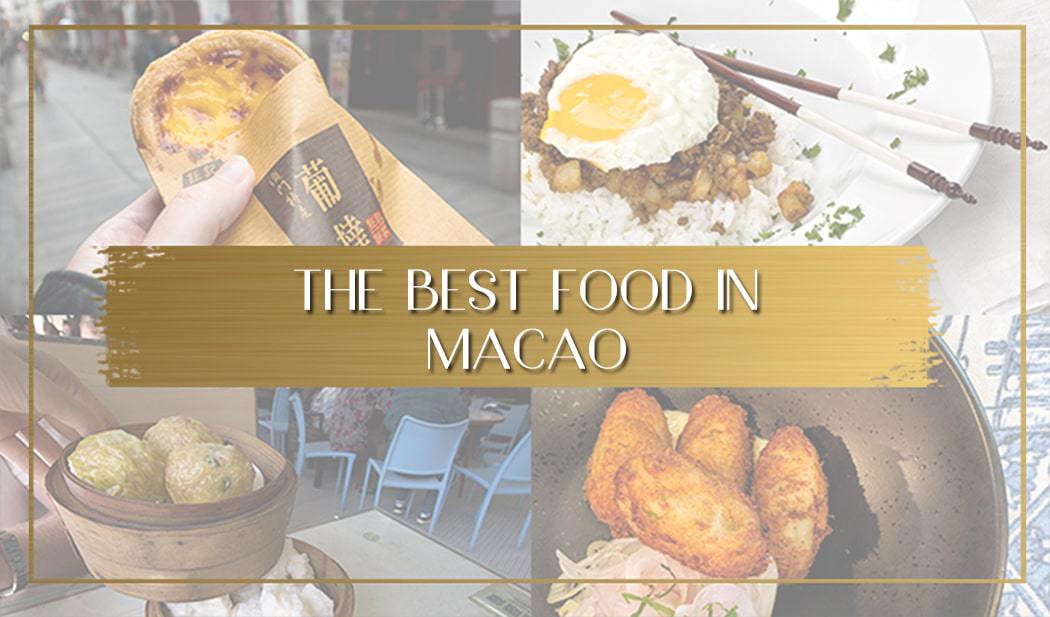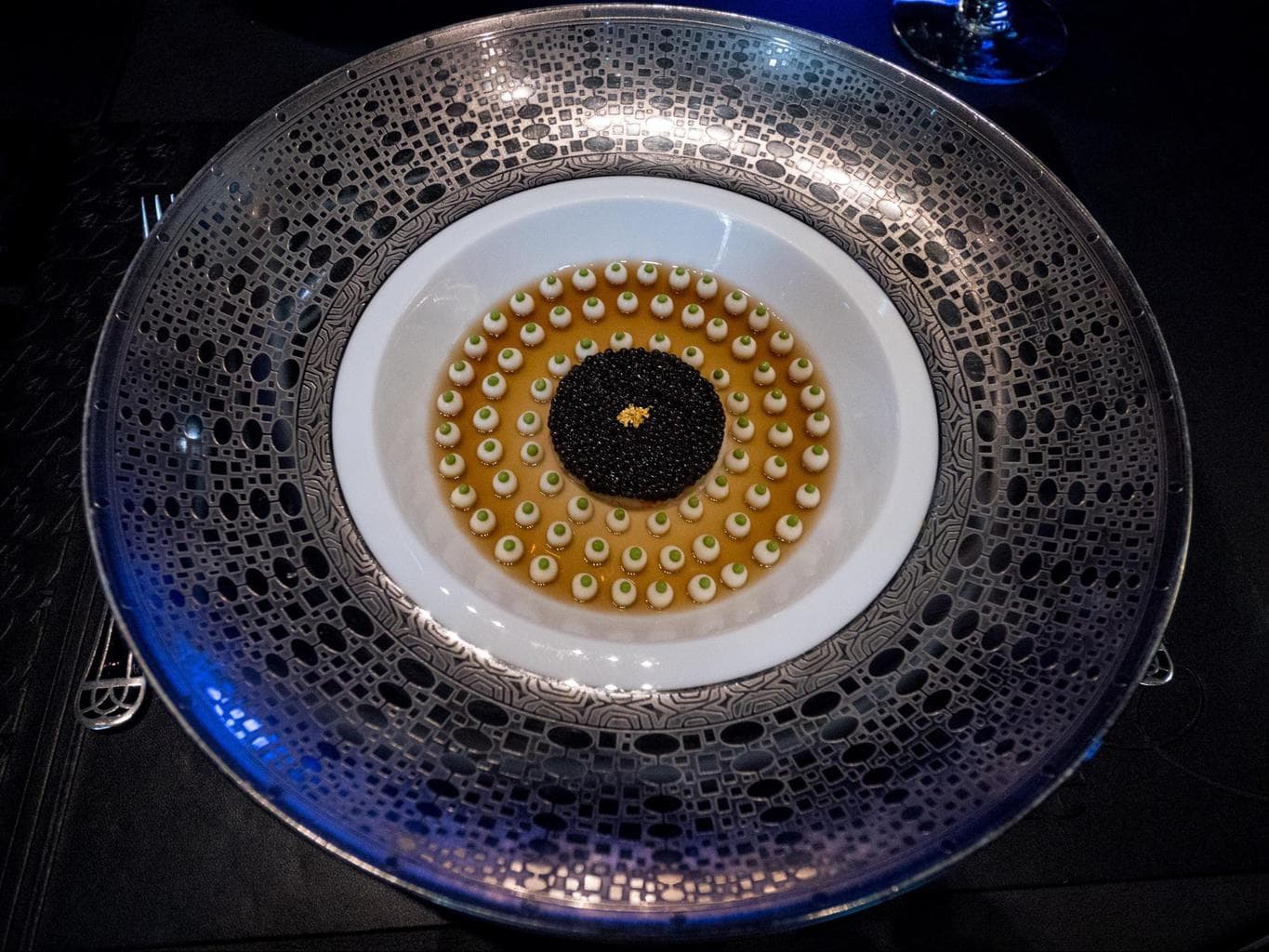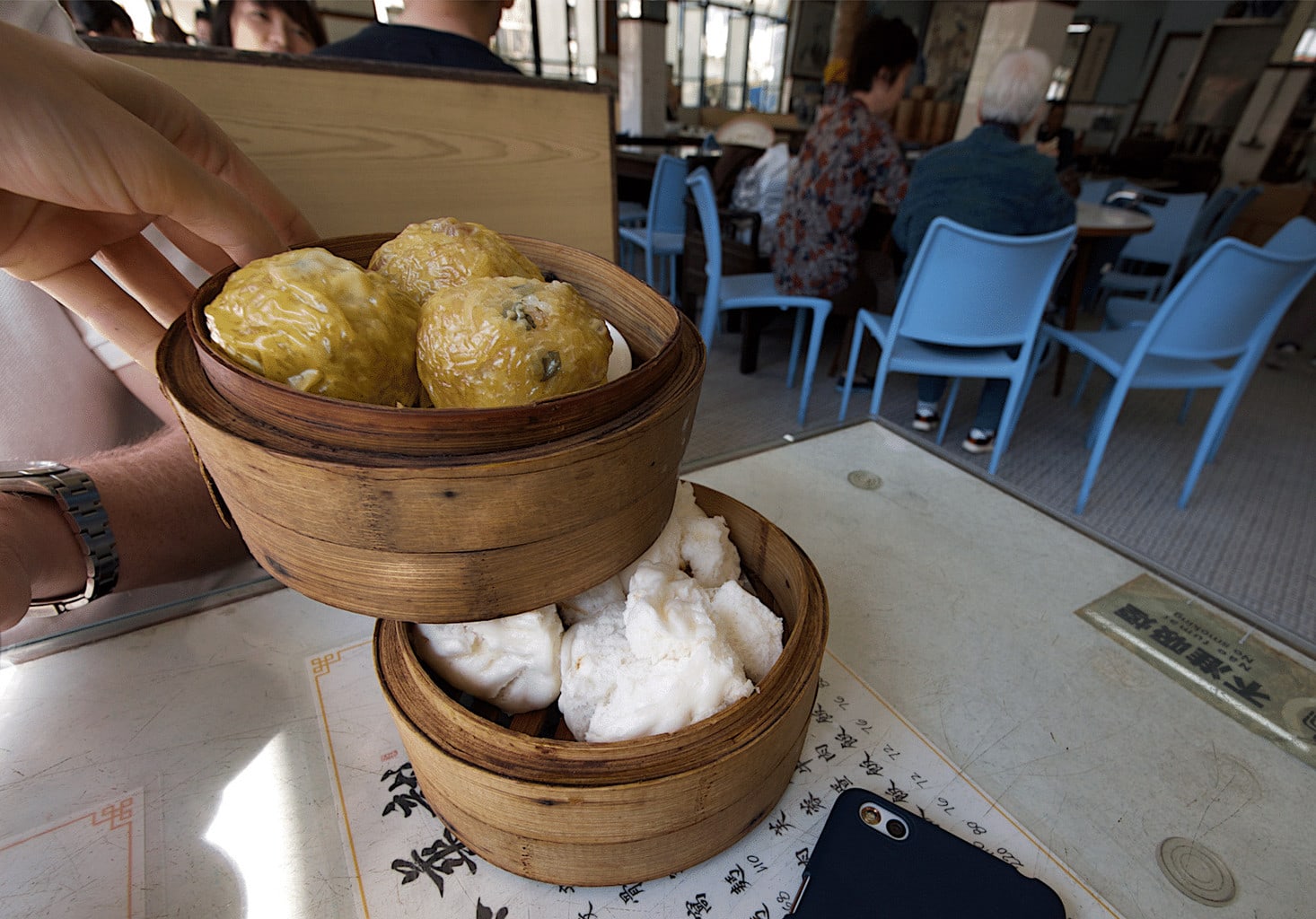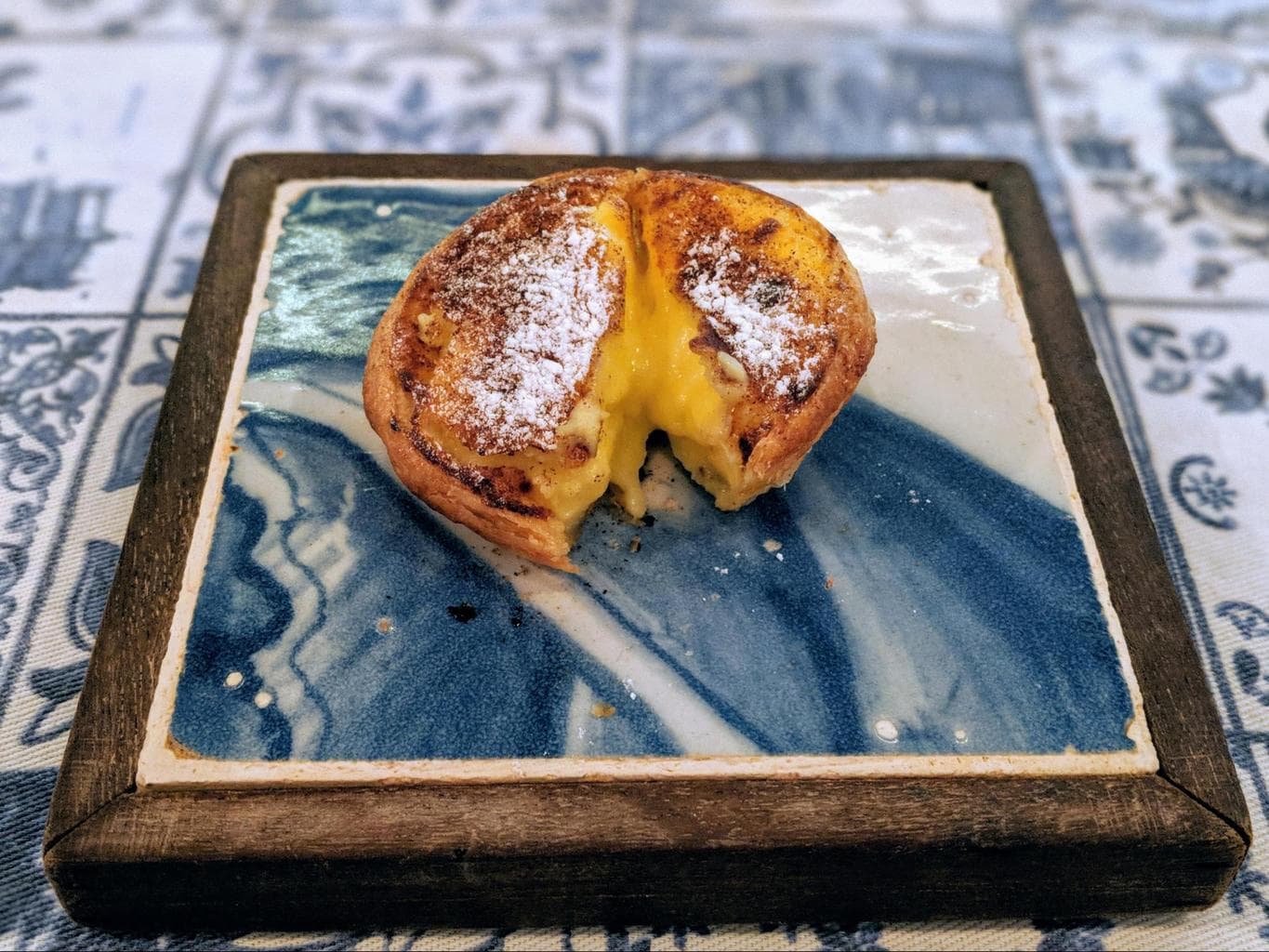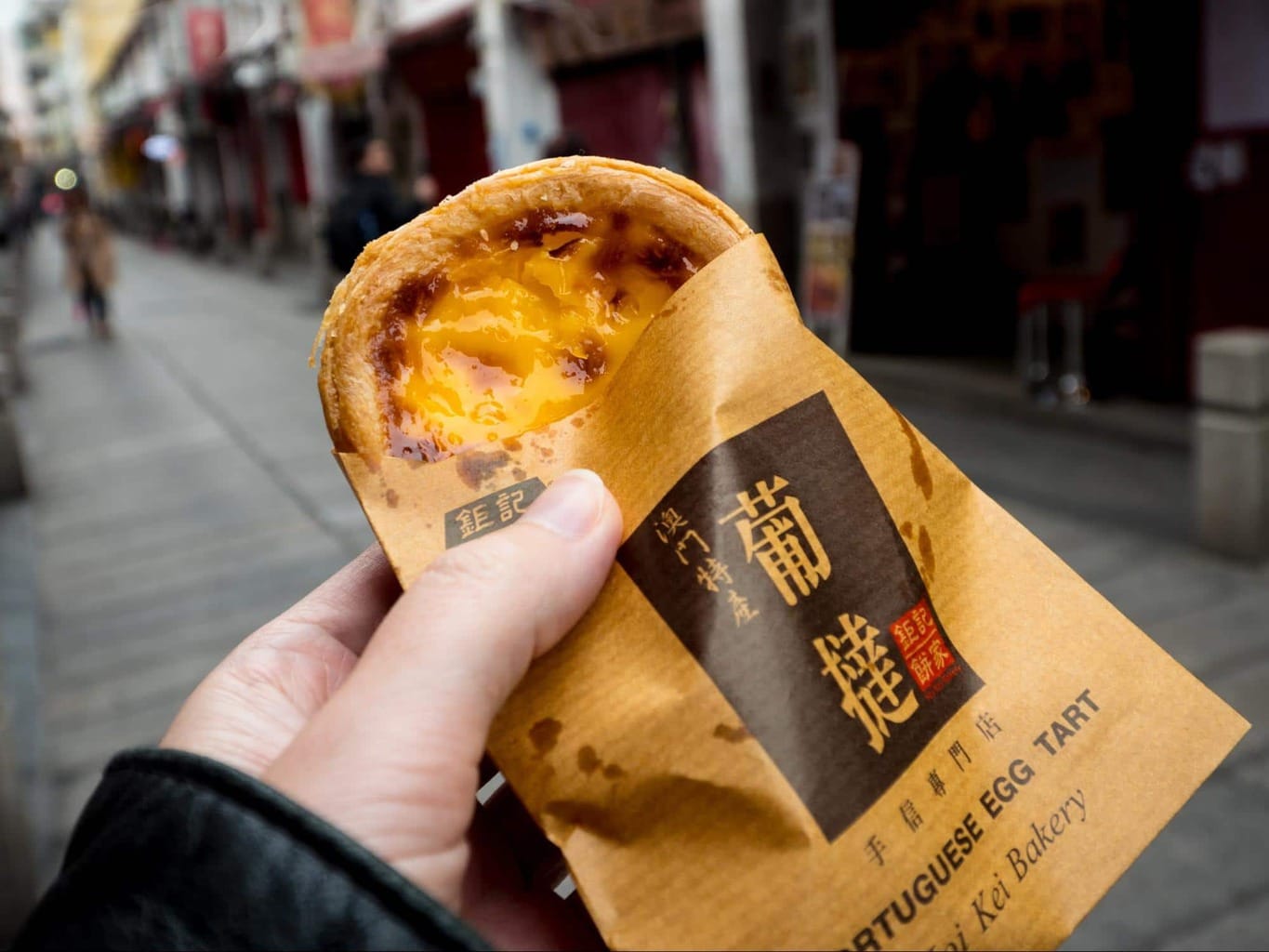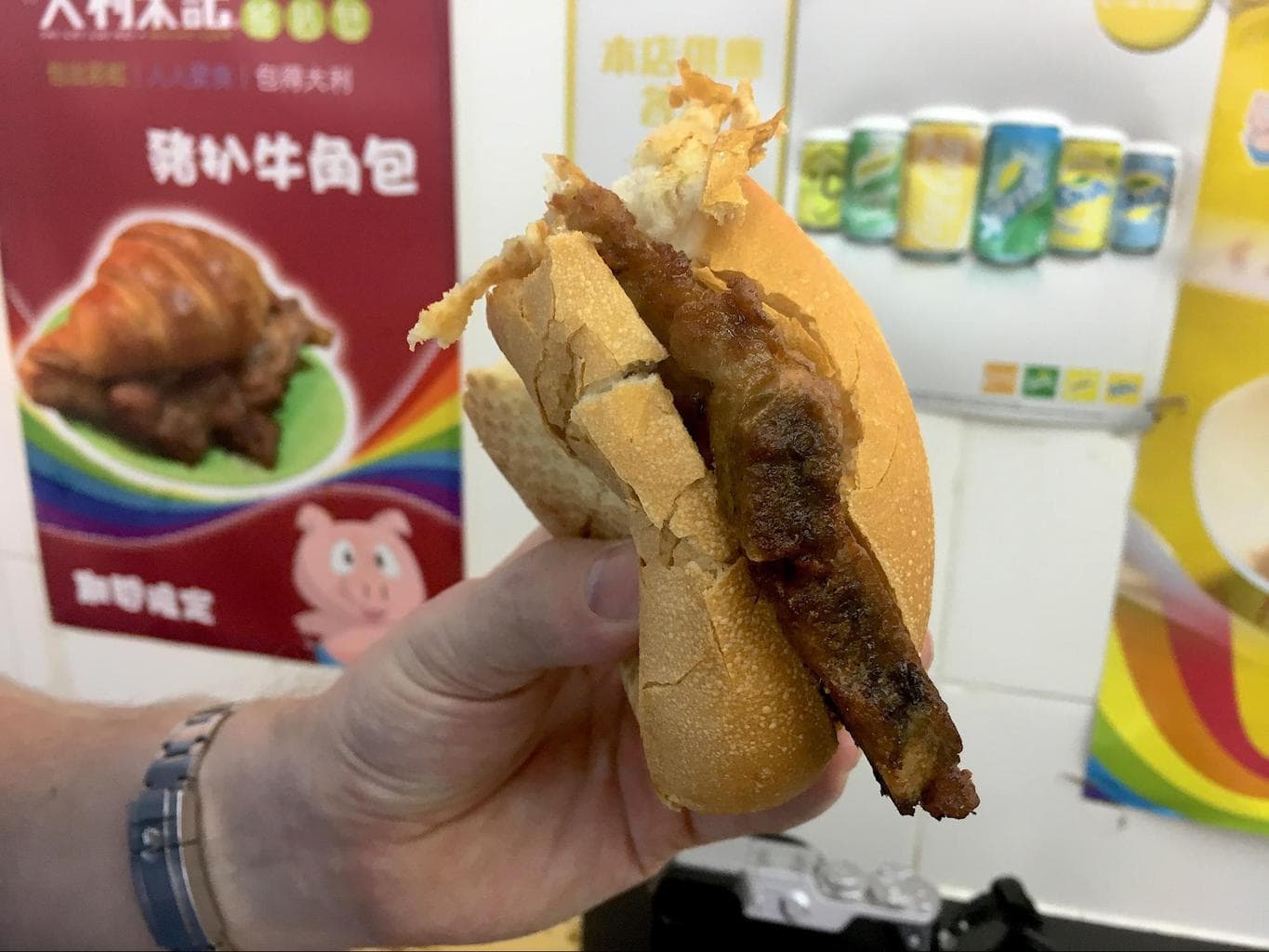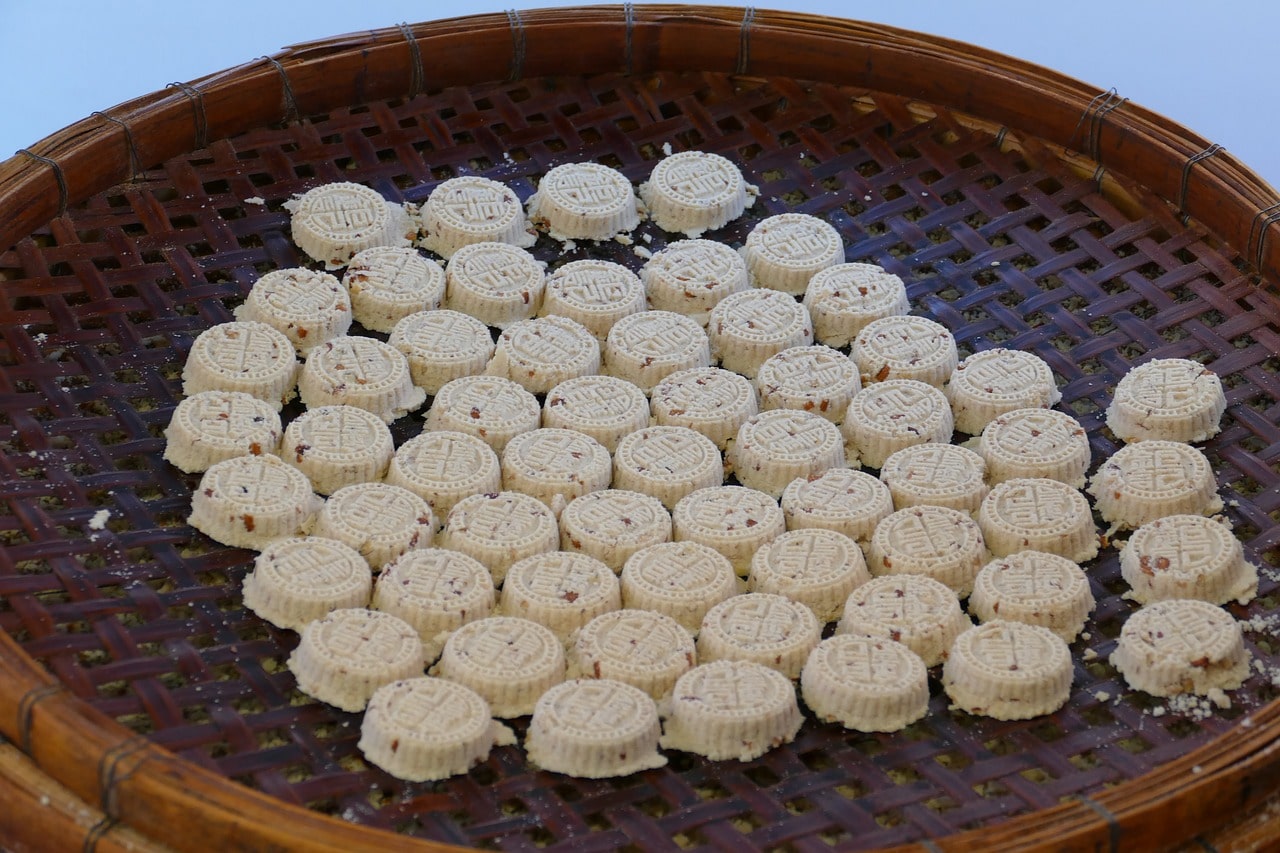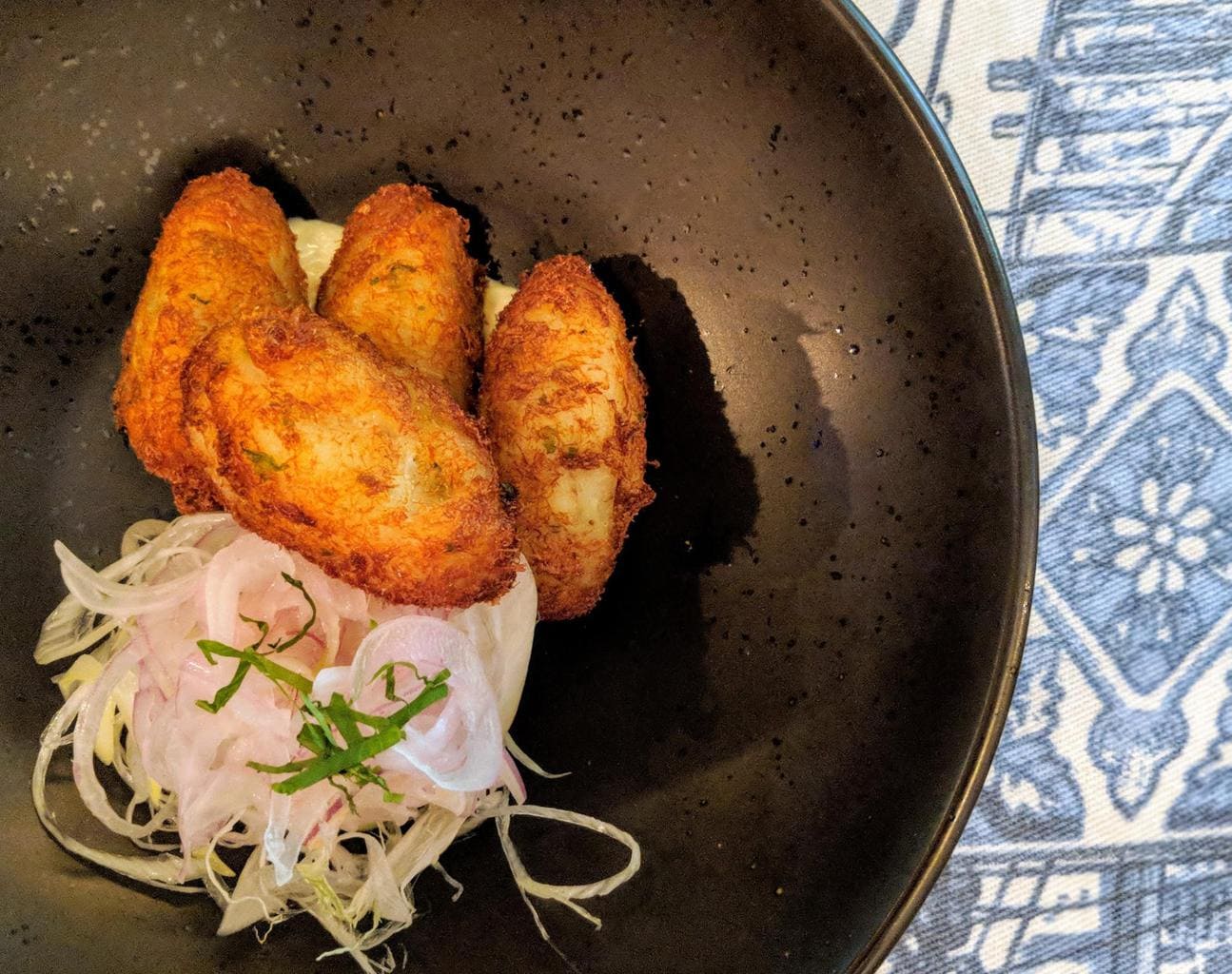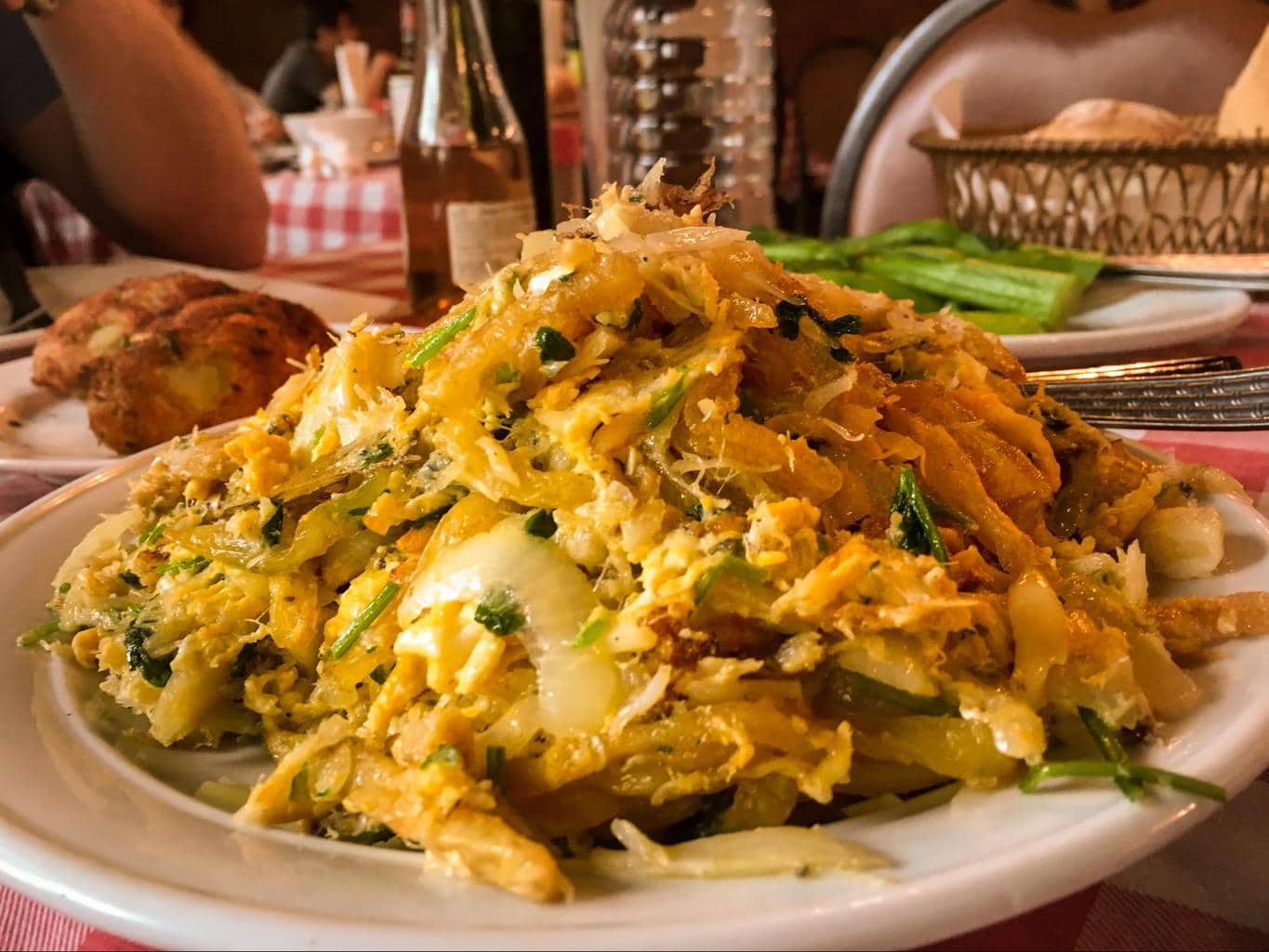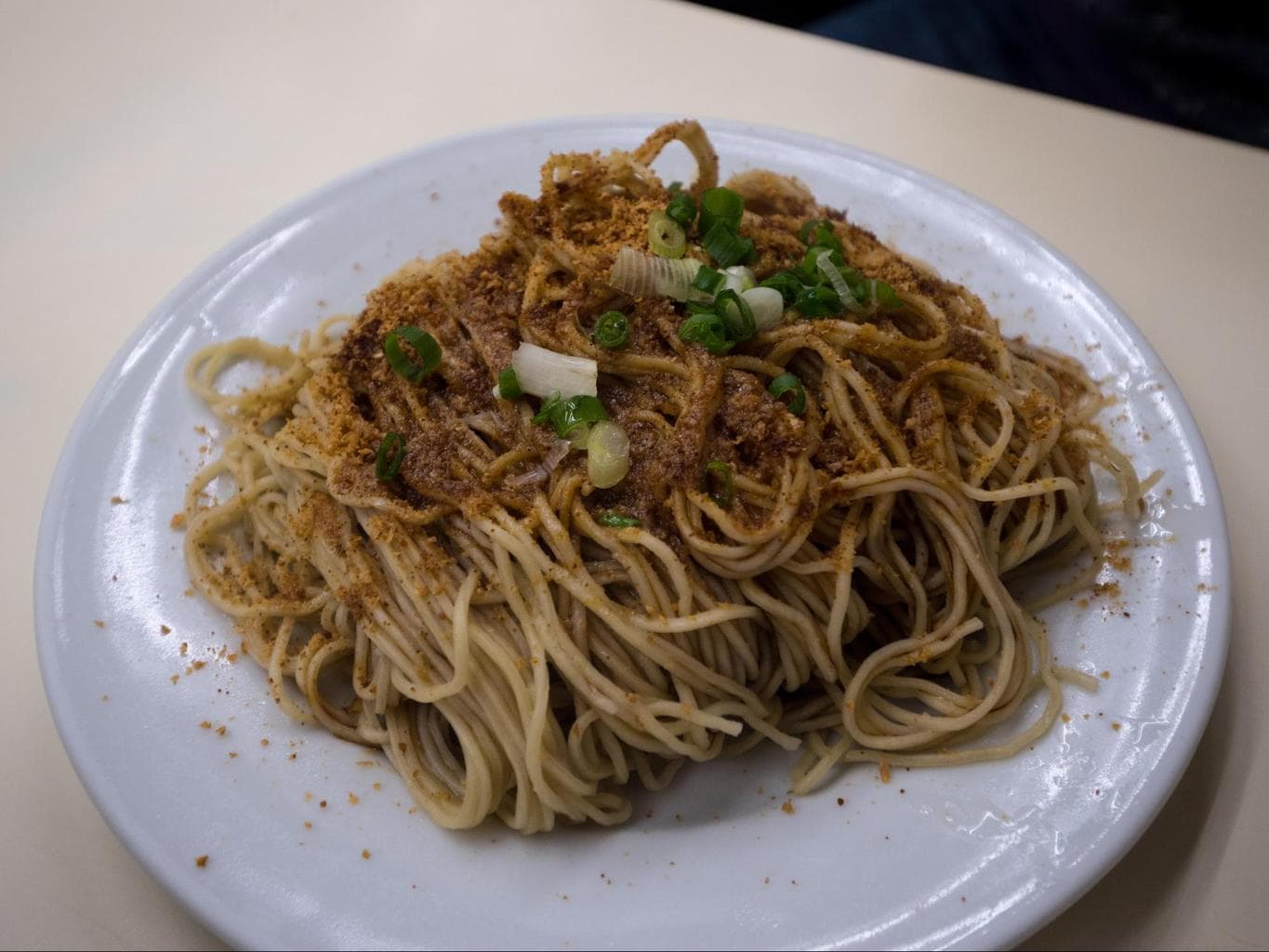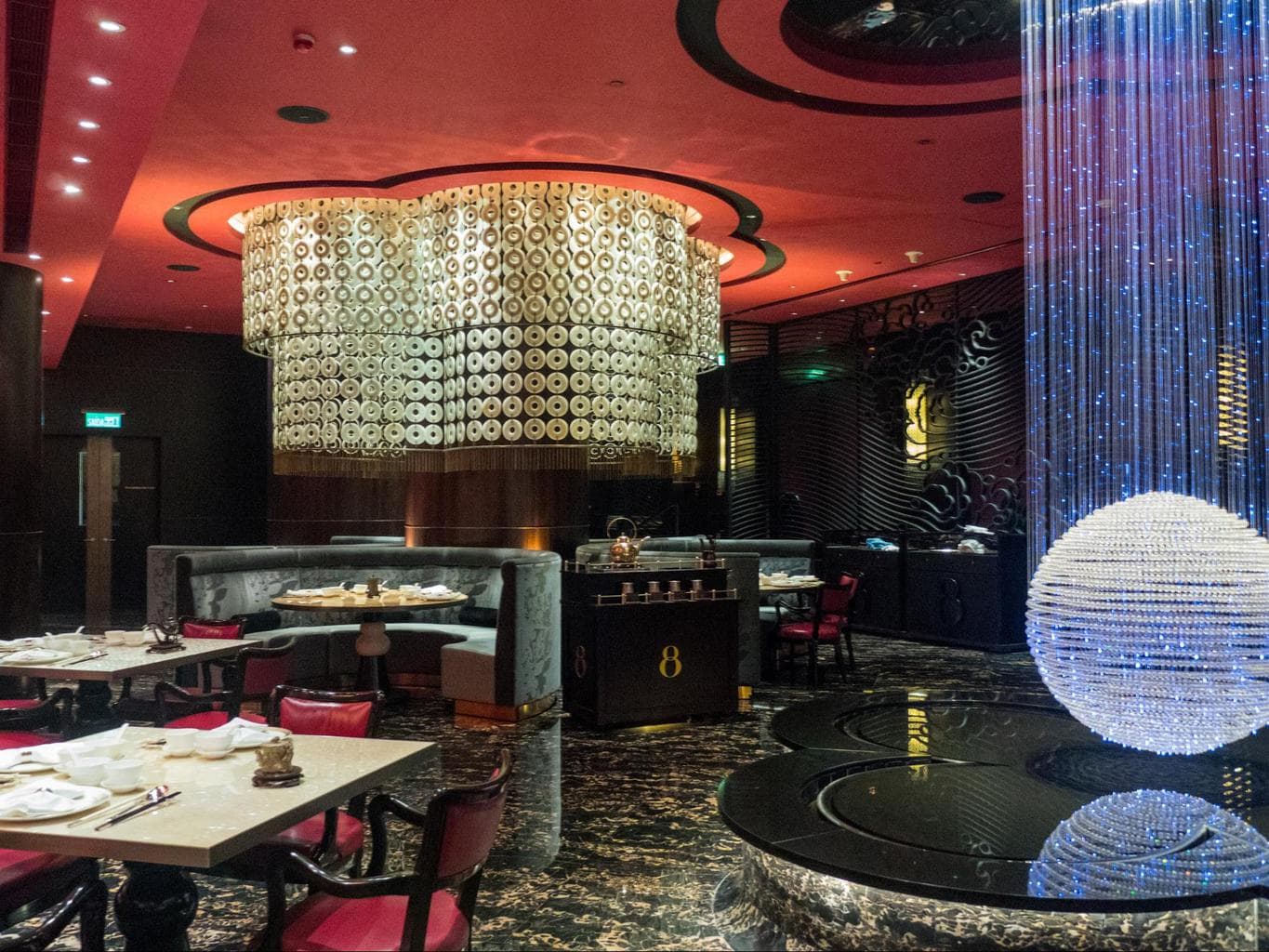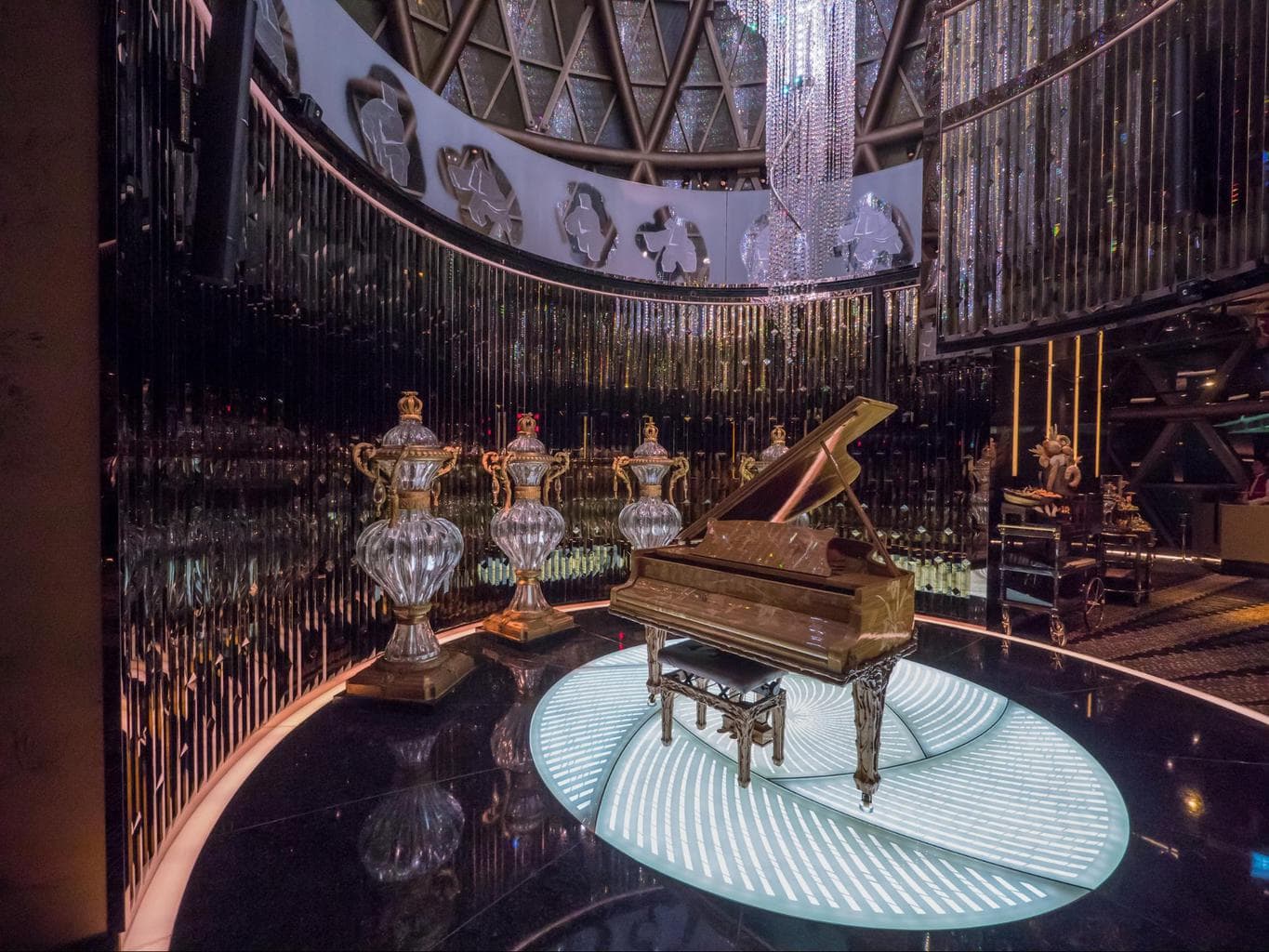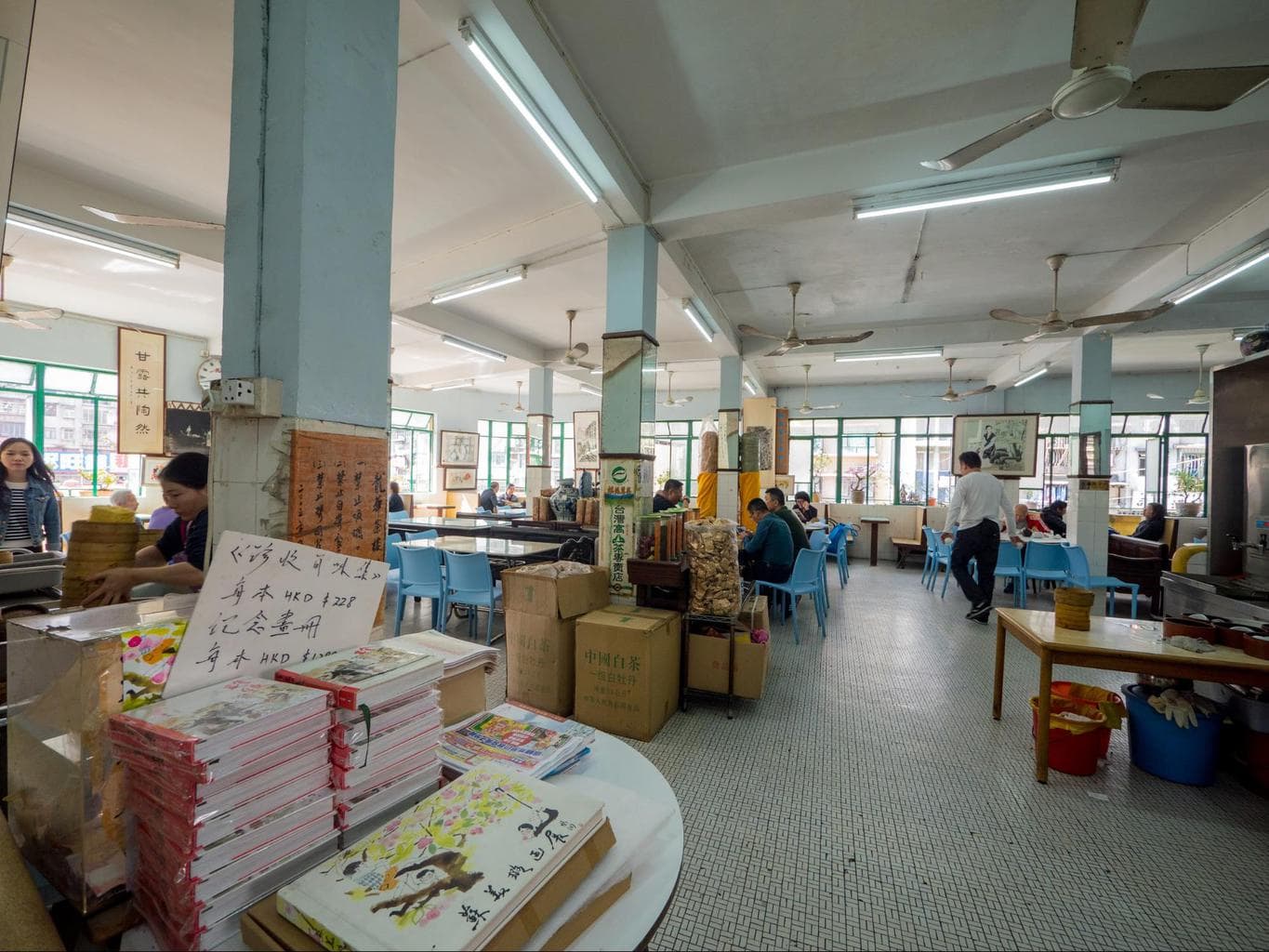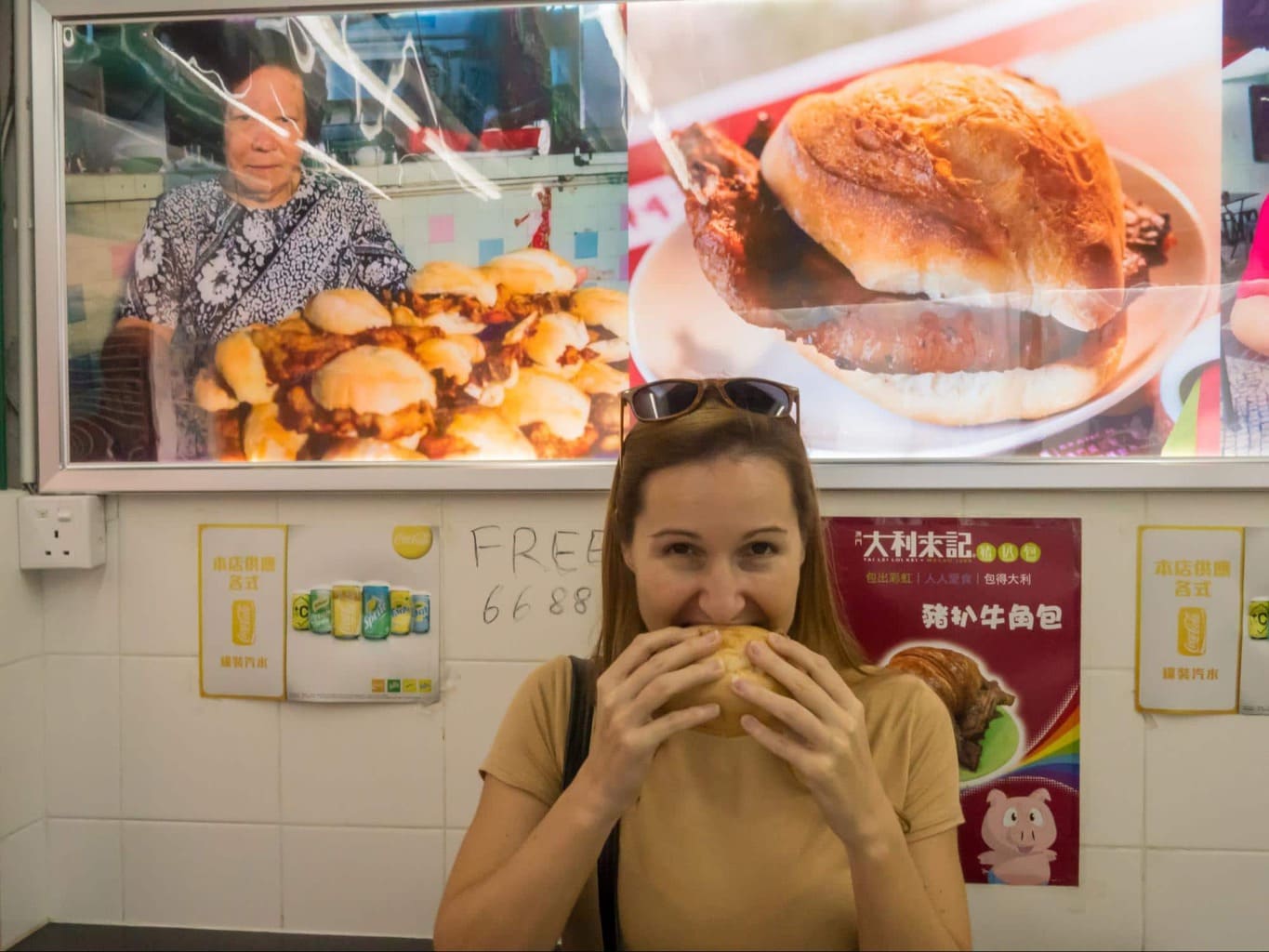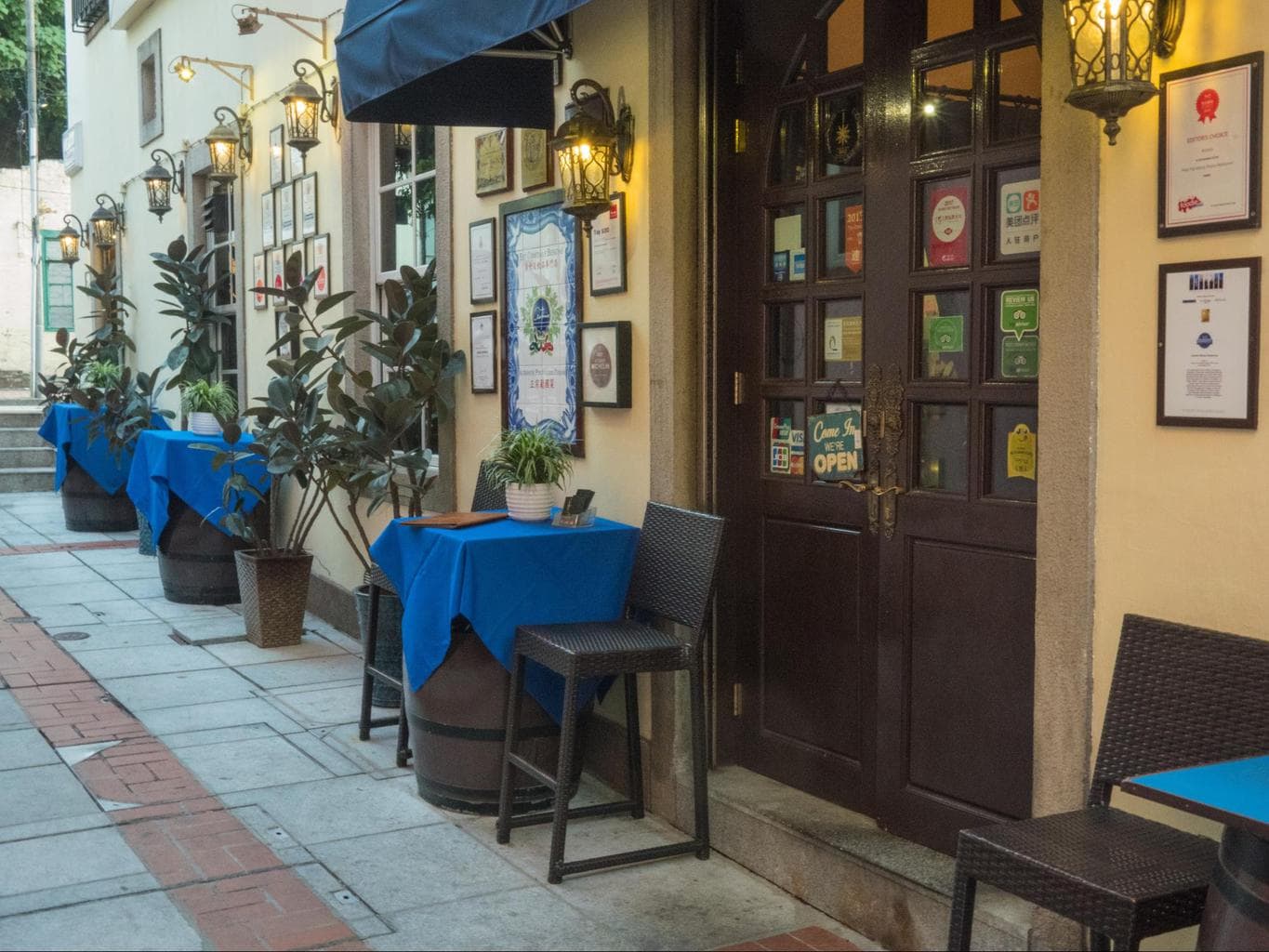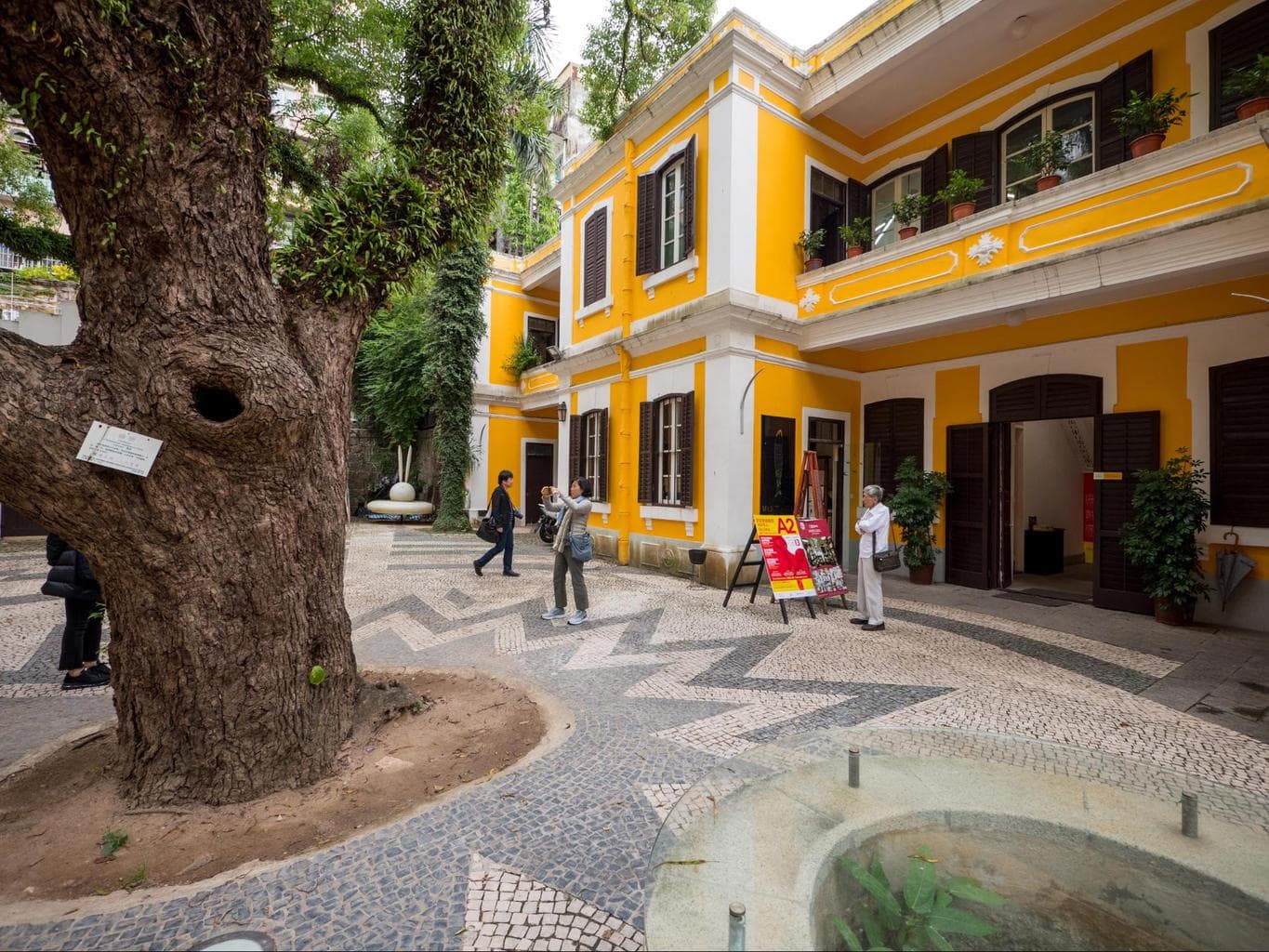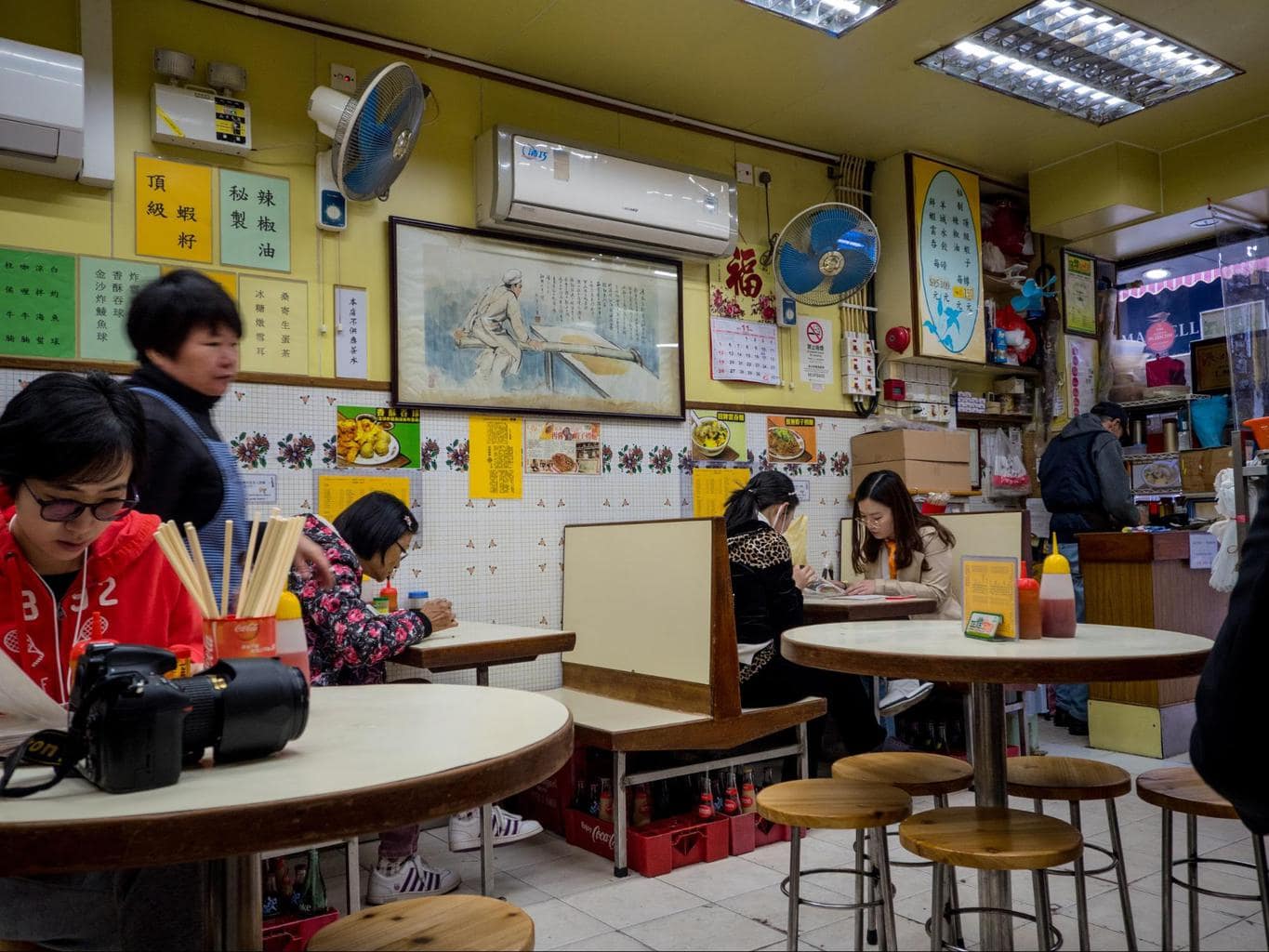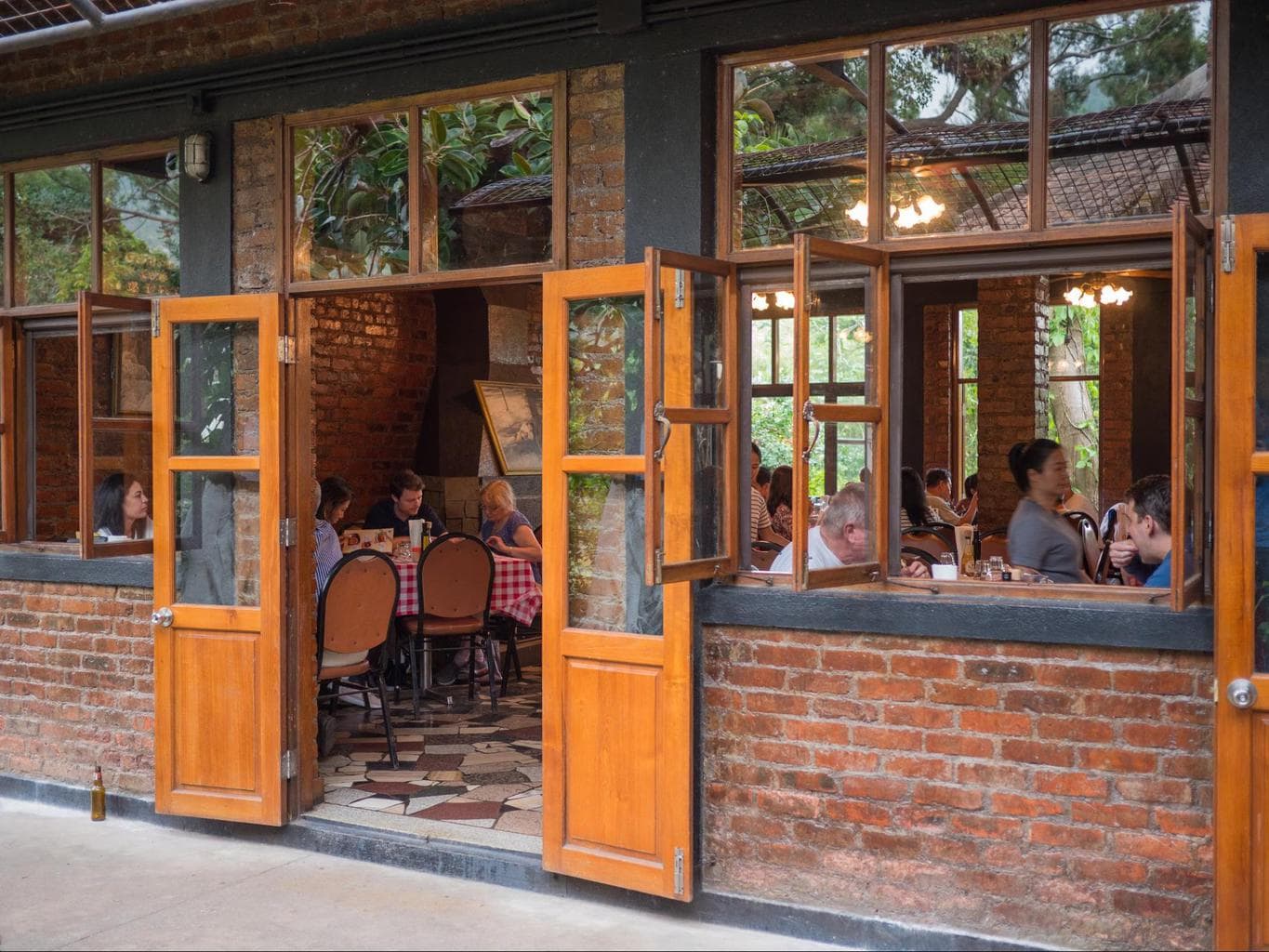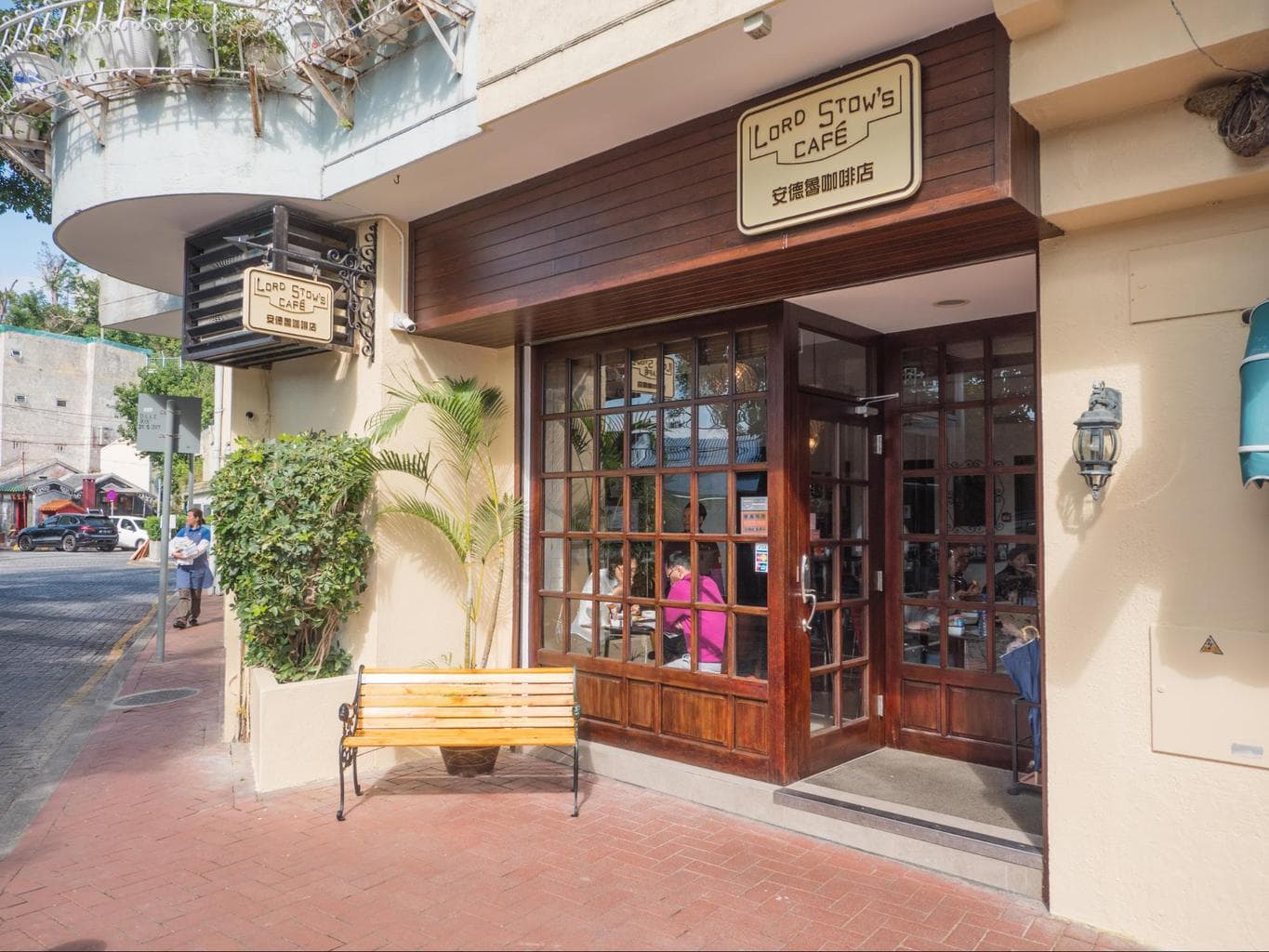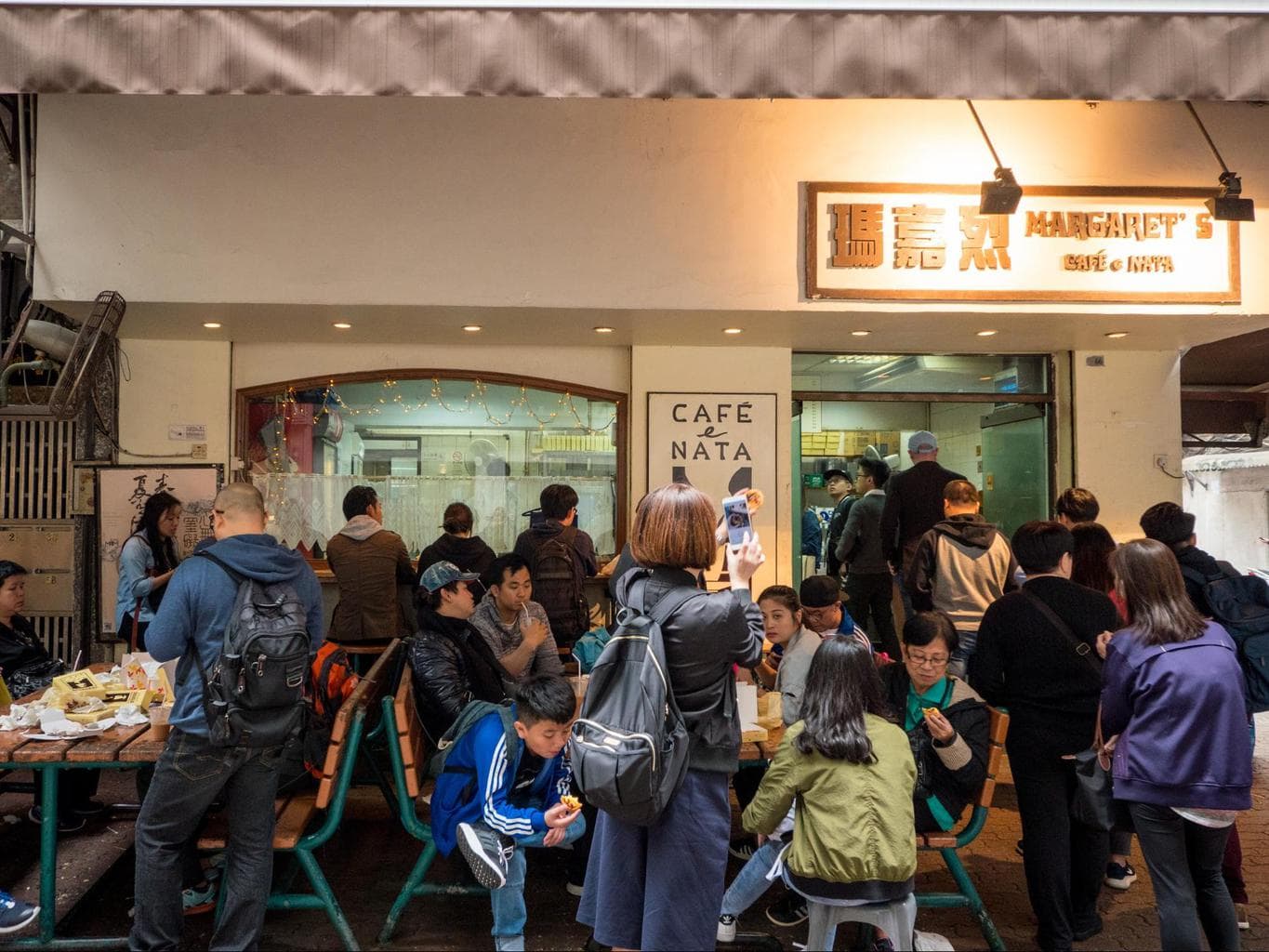This post has been written in collaboration with Wego and the Macao Government Tourism Organization who wanted me to showcase the best foods in Macau from my three independent visits. This post on the best food in Macau was last updated in June 2020.
Macau has one of the most fascinating cultural backgrounds in Asia and that is translated in its heritage and its food.
Officially a Special Administrative Region of China, the area was under Portuguese rule for hundreds of years. The Portuguese influence, coupled with Macau’s trading role in the Far East, gave Macau food a complex and interesting palate.
While many of the visitors to Macau head there for the casinos and the shopping, there are many other things to do in Macau. In fact, I have visited Macau three times and once spent over two weeks there and I never stepped into a casino.
Talking of which, Macau’s casino revenues have been larger than Las Vegas’ since 2007. I am sure there are many other interesting facts about Macau that you did not know. But, what was I doing if I did not spend any time at the casinos?
Hunting down all the UNESCO-listed heritage buildings in Old Macau, following the walking trails, getting lost in its picturesque alleys and filling my belly with some of the best food in Macau from across Taipa, Cotai, Old Macau and even Coloane.
Having good food in Macau is almost a given. Culinary travel is definitely strong here and a great reason to visit Macau, but you will also find a lot of activities to fill the space between every meal, and help digest.
I highly recommend everyone to spend a few days in the city and not just go for a day trip from Hong Kong. Although, if that is all your time affords, check out my one day trip to Macau from Hong Kong to make the most of the 24h there.
What to eat in Macau – Best food to try
Food in Macau is made of the blend of several international options, as would be expected in such a cosmopolitan city, Chinese dishes, Portuguese food and Macanese cuisine all coexist to make the culinary offering in the city exceptional.
The best food in Macau includes traditional Portuguese dishes, like the famous egg tarts or codfish based recipes, Chinese foods like dim sum and noodles, or unique fusion dishes that were created and developed right in Macau through the many influences coming through the trading routes.
The latter would be considered Macanese food and it combines ingredients and inspiration from India, Africa and Portugal added to the local Chinese dishes.
Even Portuguese dishes that are commonplace in Portugal have a different flare in Macau because the wives of the first Portuguese to arrive tried to replicate their home food using Chinese techniques and ingredients and had to adapt the recipes.
The result is interesting and delicious and I love the fusion of cultures that shows on a single plate. Many consider Macau food to be the first fusion cuisine to exist.
In the following section I will be talking about the best Macau food to eat including its most famous dishes from all of its cuisines. Some of them can be had at proper restaurants, others are available at street stalls and some are best found in stores.
Scroll down after this section to see my recommendations for the best places to eat in Macau where you can sample some of these delicacies.
Fine dining in Macau
With so many high rollers, money being spent and won at the casinos and so many opportunities to celebrate life, Macau has established itself as a Michelin-starred destination catering to those who are looking for something really special and so some of the best food in Macau is found within the confines of fine dining restaurants. You can splurge at Macau Macau’s best luxury hotels or indulge in an opulent and award-winning restaurant.
The Michelin Guide for Hong Kong has included Macau for many years and lists nine star awardees making the city one of the highest concentration of fine dining restaurants in the world. It should come as no surprise that a fine-dining meal is therefore one of the best things to eat in Macau.
I could not decide which one of the two 3-Michelin starred restaurants in Macau I wanted to try during my stay so I tried them both, The Eight and Robuchon au Dome, and they could not have been more different dining options. Scroll to the next section to read more about each.
Must eat in Macau: Dim Sum with tea
As I mentioned, Chinese and Portuguese dishes are the best foods to eat in Macau. Dim sum is a great example. This traditionally Chinese tea snack has made its way to Macau too and it is omnipresent, from the teahouses to the shopping mall yum cha places, like the yum cha eateries in Singapore Chinatown, and it is best enjoyed with a cup of tea.
While tea is not grown in Macau, the region’s location by the sea and its strong trading port turned Macau into the exit point for precious tea leaves that were sold to the West. Dim sum is of course best paired with your favorite tea and this is exactly how you should have it.
There are several hole in the wall dim sum places and teahouses in Macau. The grittier and simpler they look, the better the experience, in my opinion. Look out for the tiled places that have small plastic stools and lots of locals sipping tea from tiny Chinese tea cups. Or check out my suggestions at the bottom of this post.
Macau’s most famous food: Egg tarts
No matter who you ask about Macau food, this item will always be part of the answer. Egg tarts are a must try food in Macau and its most iconic snack. Whenever you see any reference to things to eat in Macau, the egg tarts will undoubtedly be part of the picture. Usually, they are in fact the picture!
The ones in Macau are pretty similar to the Portuguese pasteis de nata but have a slightly “British” touch to them, a more custardy taste, probably because of their humble origins at Lord Stow’s Bakery in Coloane, the first store to sell them.
The pastries should come with a flakey base and a slightly runny top that should be warm out of the oven. All three famous egg tart stores, Lord Stow’s, Margaret’s Cafe e Nata and Koi Kei Bakery, tend to have long queues outside but they move fast and guarantee that you get these bundles of goodness freshly baked.
A lot of people come to Macau for the food and having egg tarts is almost like a pilgrimage, as if they were the best Macau food item. I tried the ones from all three famous places several times and, in my opinion, Lord Stow’s are the best. They are all slightly different in how runny and custardy the filling is. Tell me which one is your favourite.
Macau’s tastiest food: Bak Kwa
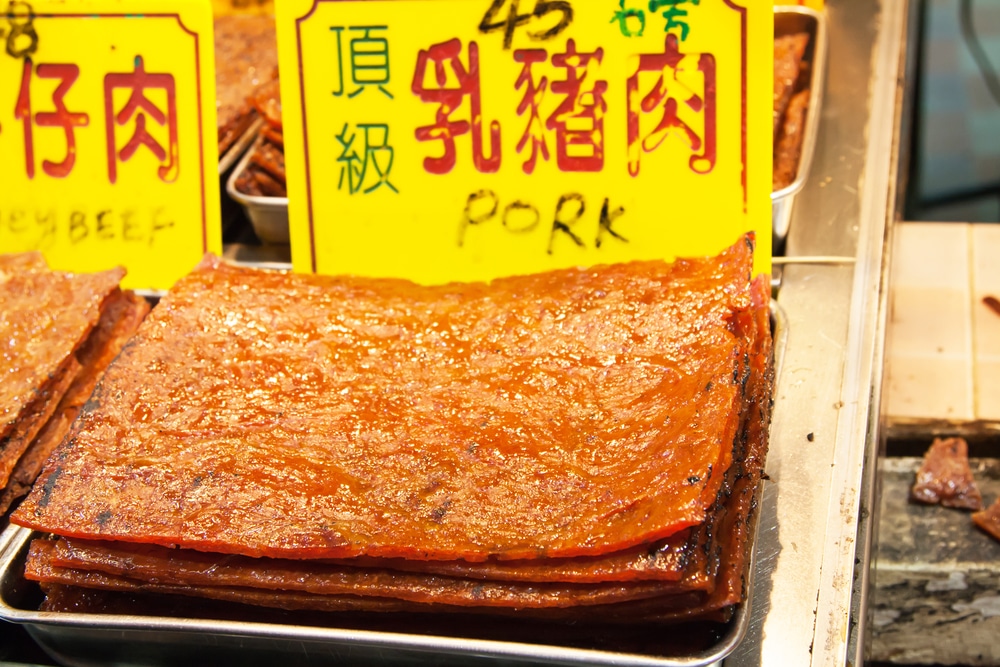
Living in Singapore, Bak Kwa is something that I am pretty familiar with but here it takes a whole new life to become one of the most typical things to eat in Macau. You can smell it, you can see it, you can spot it in plastic bags. It’s everywhere.
Chinese mainland visitors fill boxes and bags with this fatty, sweet and tasty pork jerky of sorts that is one of the most interesting foods in Macau. It’s a must try if you never have. And it is also impossible not to because the stores are everywhere, especially in Old Macau, and the sellers are loud and insistent, trying to drive the crowds to sample and buy.
Even if you do not want to take large amounts home as gifts, as most Chinese visitors do, make sure to eat least buy a piece to try. It is a very flavourful, sinful and unique snack. If you take some home, I assure you every time you eat it you will transported right back to Macau.
One of the best places to eat in Macau is the area around Largo do Senado. Grab a few pieces of bak kwa and sit somewhere to people watch.
Most iconic Macau food: Pork chop bun
If you are visiting Macau there are two things that will for sure be at the top of the list of foods you need to try: egg tarts and pork chop buns. While the appeal and taste of egg tarts was obvious from the start, and I have indulged in many in the past, both in Portugal as well as in Japan, the pork chop buns were more of a mystery to me. So I hunted down the most famous and original place to try them.
Pork chop buns are essentially a sandwich made with a grilled pork chop in the middle and a flaky white bun. The secret is in the seasoning and maceration of the pork which comes in a sweet-ish slightly Chinese inspired flavor probably thanks to some soy sauce and ginger.
Bear in mind, this is a pork chop, so there is a massive bone which you may bite into without realising. Bad idea, so be careful.
Did trying them solve the mystery for me? I still think that there are other foods I tried in Macau that I enjoyed more but you can hardly leave Macau without sampling one its most famous snacks.
Macanese food: African chicken
How can a dish called African chicken be a typical dish in Macau? Easy.
African chicken is a chicken cooked in a spicy rich gravy sauce, piri piri style (like the one served at Nandos in South Africa), that was inspired by the foods and ingredients from Angola and Mozambique, former Portuguese colonies, where the chef and creator of this dish traveled to.
Now you are starting to see the connection. The Portuguese chef visited these countries that were part of the Portuguese Empire and decided to incorporate some of the ingredients in what has remained as one of the most famous traditional Macanese dishes in Macau.
Nicest Macau food: Almond cookies
If Bak Kwa was not your thing, I bet almond cookies will be. These almond and bean flour based cookies are as pervasive as the Bak Kwa and are sold across the country in the many confectionary shops.
They make for pretty and lovely souvenirs as they are very carefully packed for travel. My mum and sister loved the boxes I brought them from my trip and how best to explain the feeling of a place than through its food.
All the stores selling almond cookies will let you sample their fare, so come here after a meal for dessert. Chinese food is not known for its desserts but Macau certainly has a sweet tooth. Between the egg tarts and the almond cookies you have a great selection of Macau sweets.
Traditional Macanese breakfast: Minchi
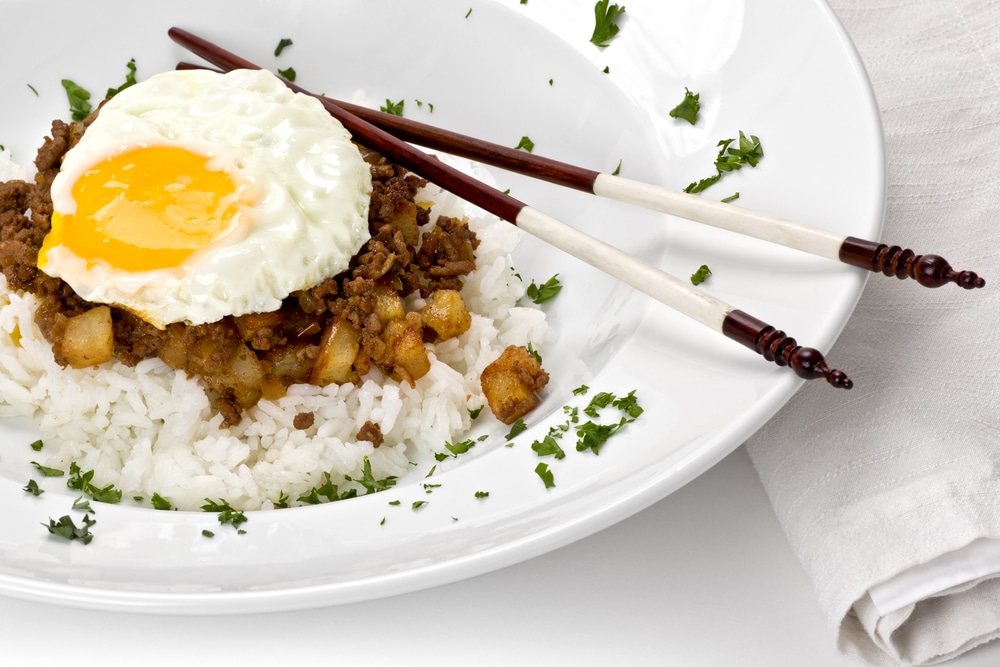
While locals eat a range of things for breakfast, from the famous Chinese congee (maybe try the one with frog legs), sweet coffee, fried noodles or even Western choices, perhaps the most traditional of all Macau foods for breakfast is minchi, a bowl with steamed rice, stir fried minced meat and spices and a fried egg on top. There is not heartier way to start the day than this.
Minchi can be found across Macau and even street vendors sell it. The fried egg gives it away so you can’t miss it.
Traditional Portuguese food in Macau: Bacalhau
Codfish is probably the most famous Portuguese food. You cannot eat at a Portuguese restaurant in Portugal and not have cod in some form or shape.
While a lot of the Portuguese restaurants in Macau have all the typical dishes mentioned in this list of best Macau foods, my favourite are the codfish cakes.
Similar to Spanish croquetas, codfish cakes are cylindrical cakes made with salted codfish and potato and deep fried. They are usually eaten as snacks, tapas style, or starters and you can find them in restaurants, rather than street stalls. They are a must eat in Macau and you won’t be able to miss them if you eat at any of the Portuguese restaurants mentioned in this list.
Another omnipresent typical Portuguese dish you will find at all of the restaurants in Macao is bacalhau a braz. This is a scrambled egg type of dish with more codfish and chopped fried potatoes than egg, with some spinach to add colour and flavor.
Best Portuguese dessert to try in Macau: Serradura
Portuguese food abounds in Macau and while it is not 100% what you get in Portugal and a lot of influences from Asia have been incorporated, serradura is one of the most typical Portuguese desserts that has made its way, almost untouched, to Macau.
Serradura which stands for sandust in Portuguese, refers to a layered dessert made of cream and condensed milk in between layers of finely crushed tea style biscuits, hence the name. It is delicious and a great way to finish a lovely meal.
Noodles (with prawn roe)
There is an unlimited amount of Chinese “mom and pop” local places and street food vendors in Macau with lots of character and soul.
Most of them don’t have English menus and you will be forced to use Google translate (the app is awesome) to get around and try to second guess its funny translations. You can be sure that a lot of the places will serve either noodles or rice and these are both great Macaufoods.
I prefer dry noodles over the soupy version and while you can’t really go wrong with a bowl of noodles with minced pork, some of them are better than others. One of the most sought after foods in Macau is a bowl of noodles with prawn roe.
You heard right, prawns also lay eggs and they are a delicacy as much as salmon roe is. Pork noodles are another great dish to try if you don’t usually eat noodles.
Scroll to the next section to find out where to sample this unique dish from a long-standing stall that makes its own noodles too.
Fish ball skewers with curry sauce
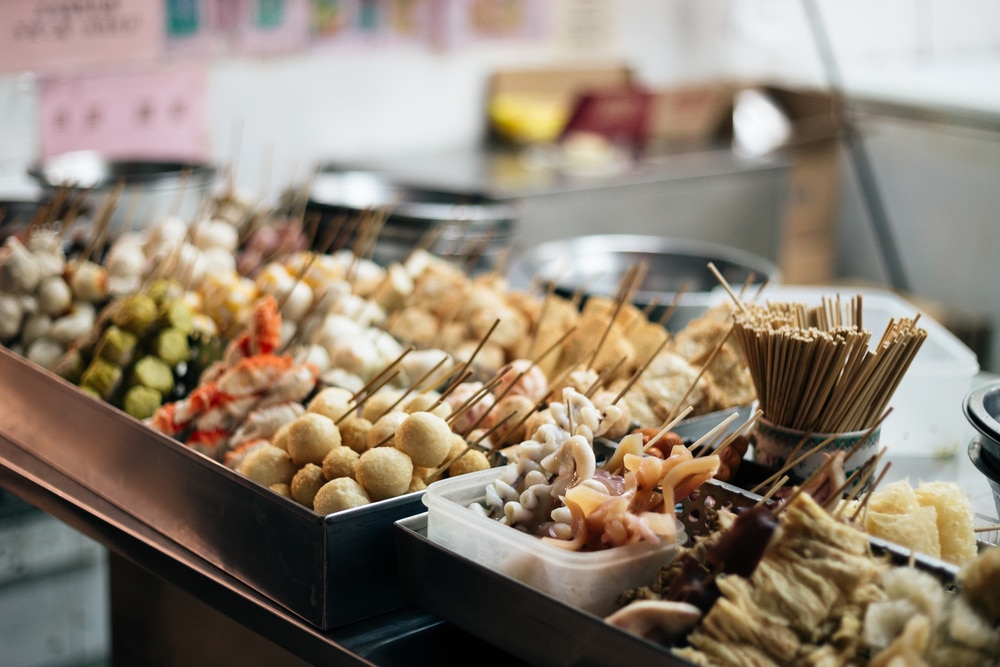
This may sound strange but it is a very popular street food in Macau. You will see vendors selling a selection of skewers which you can pick from the display for them to be cooked. Once done, you will get it in a paper take away bowl with a spoonful of curry sauce to dip in. It is a bit messy but oh so good.
One of the best places to eat these skewers is in the street, so there is no specific place to recommend but you should have no problems finding them.
Where to eat in Macau – Best places to eat, restaurants, cafes and stores
The best places to eat in Macau are an interesting combination of restaurants, street stalls, small hole-in-the-wall cafes and even shops selling Macau best snacks. Some of them are fine-dining 4-hour meal affairs whereas others are take away stores. Some are $5 a meal, some are $50 and some are $500 a meal.
While a lot of Macau’s must-eat foods are sold at specialised outlets, there are also a few great restaurants in Macau where you can sample some of its most traditional fare or just enjoy a wonderful meal. You can even try some of the best Macau foods above in just one meal.
For example, the best Portuguese restaurants in Macau will all serve the Portuguese dishes mentioned above. Go for one which serves Macanese food and you may be able to have a fully traditional meal made entirely of Macau foods.
In the following section I will be recommending where to eat in Macau and highlighting what foods you can order at each place. While my intention is to give you some suggestions of places to eat where you can sample the foods mentioned above, some of Macau’s best restaurants don’t actually serve traditional food, but that does not make them any more interesting.
And even for a foodie like me who loves to eat local when traveling, the occasional cuisine break often helps appreciate the local delicacies even more.
Here is my list of places to eat in Macau.
The Eight
The Eight is one of only two three Michelin starred restaurants in Macau specialising in very creative and refined dim sum and Chinese cuisine.
The name is auspicious in Chinese and the outlet is classically ostentatious with water cascading down the black and dimly lit corridor wall leading to the main space and a large crystal ball chandelier that seems to be floating in the room.
The decor is sober with lots of expensive and rare marble, splashes of orange and red used in the bright goldfish painted on the walls. They are also symbols of wealth and prosperity, just like the restaurant’s name, which is exactly what you would need in the gambling capital of Asia.
The tables are set sufficiently far apart from each other to provide privacy and, as is traditional in Chinese restaurants, some of them are round and located in purple colored booths. There are also private rooms for larger groups or business meetings.
Service is cordial and friendly but will make sure you do not take pictures of the menu, perhaps they are worried about IP.
There is a very extensive a la carte menu with over 400 dishes to choose from, some of which require pre-ordering and several others include Chinese delicacies.
The Eight is located on the second floor of the Lisboa Hotel in Old Macau. Reservations are essential and can be done online via the restaurant’s booking form. Read my full review of The Eight.
Robuchon au Dome
Robuchon au Dome is the other 3 Michelin starred restaurant in Macau and part of the network of fine dining restaurants by famous celebrity chef Joel Robuchon who has the most Michelin stars in the world and outposts in other Asian cities like Hong Kong and used to have two in Singapore before they closed down mid-2018.
Expect the same caliber as in his other venues, and French cuisine with refined elements in an utterly over the top environment, so characteristic of the Lisboa Hotel, where this restaurant is also located.
I will admit that I went in with low expectations as I am not a fan of Robuchon based on previous experiences in Singapore, but in Macau, the restaurant excels. The set menus are for special occasions, and you can easily spend $500 per person, but as fine dining food in Macau goes, Robuchon au Dome takes the top spot without a doubt.
I would even suggest you not eat anything else for the day before going because the amount of delicious and incredible food provided (including a desert cart that was heaven to me and unlimited breads) is such that you will regret being full.
Here you will not find any of the traditional foods of Macau or even any of its cuisine as this is fine dining French food only, but there are some nods to Chinese cuisine occasionally that may remind you of your location. And of course, there are also the views.
Robuchon au Dome is located on the top dome floor of the Lisboa Hotel in Old Macau. Reservations are essential and can be done online via the restaurant’s booking form. Read my full review of Robuchon au Dome.
Lung Wah Tea House
Lung Wah Tea House is a family-owned and run authentic, old-style Cantonese tea house which dates back to 1963. Located by the main harbour, the teahouse is a bit hard to find as it is housed on the second floor and the sign is not very visible, but Google Maps has the right pin, you just need to find it. As you climb up the stairs you will enter a tiled, bright and sunny room which feels a bit like stepping into grandma’s house.
You can sit on one of the booths by the large windows and watch people walk by or observe the tea market downstairs. The customers here all look like locals who come regularly and behave as if they were at home.
The (Chinese speaking) staff and owners are very friendly and will happily help you pick something from your Google Translated menu which is only in Chinese. Or pop by the dim sum cart and pick from the daily specials, you can just take the bamboo boxes that you most fancy back to your table. You will find the usual steamed buns, chicken feet and fantastic tea in cute, tiny cups. Look out around you, the place is filled with antiques and old vases, especially in a second room.
The tea house used to be a popular meeting place in the 60s and 70s when it opened. It was always packed with labourers from the harbour chatting and discussing. As Macau evolved, so did its dining scene, and traditional tea houses were replaced with modern dining options. But the business is still owned and ran by the son of the original owner who lives upstairs and hopes to keep the tea house tradition alive.
As you enjoy a hot pot of tea and maybe some dim sum, look around you for paintings and other art pieces that are quite unique and give the place character. It all feesl a bit like time stood still.
I highly recommend coming here for some casual dim sum and tea, this is one of the nicest and quaintest places to eat in Macau. Maybe you can pick some tea to take away from the selection on offer and on sale, they have small bags in pretty packaging that would make authentic gifts.
A Lorcha
‘The Sailboat’, A Lorcha is one of the most popular places to stop at if you go to A-Ma Temple as it is nearby. Expect the usual Portuguese and Macanese fare in generous portions and in a quaint family-style room with arched columns.
I very much enjoyed eating here and sampling the local dishes, it all felt very authentic and genuine, rustic even. In the evenings it is a very lively place, warm, full of chatter and the echo of conviviality.
Best to book if you want to go in the evening for dinner to avoid disappointment. More details can be found on their website.
Tai Lei Loi Kei
South China’s most famous pork-chop bun is made here, at Tai Lei Loi, in Taipa Village, at a shop founded in 1960 as a street stall by the mother of the current owner. Slices of pork with crunchy buns are served daily from 2pm until stocks last so do not go in the morning as it will be closed.
This is why the pork chop buns are snacks as they are usually eaten between lunch and dinner. The original store is in Taipa and has no seating although most clients do end up eating the buns standing at the entrance.
More information on their website.
Guincho a galera
The international branch of Portugal’s famous Fortaleza do Guincho, Guincho a Galera is a fine dining Portuguese restaurant inside the Lisboa Hotel that looks and feels like being in a wooden boat of yesteryear. You heard right, another great dining choice at the Lisboa Hotel, the foodies destination in Macau.
Expect fine china, golden laced plates, thick armchairs and old world classic elegance. You might want to try it for lunch when the set menus come at a more affordable price. When you walk in here you may even feel as if you are in one of the old-world-charm wooden boats that crossed the world trading precious goods from each country.
For more information and reservations check their website.
Antonio
Cozy, blue and yellow-tiled, steep and looking like someone’s house, this restaurant in Taipa Village embodies Portugal in Macau.
The owner and chef, Antonio, is the life of the party and is as entertaining as he is skilled. The menu here is a bit more sophisticated than at other Portuguese restaurants in Macau. The building is tall and narrow and the tables are spread across the various levels which are all decorated with typically Portuguese artefacts and the beautiful blue tiles.
Antonio is a great place for Portuguese food in Macau. So if you only try one, let it be this one. Call ahead to order the advance-booking special menu that is full of signature dishes. Don’t forget to indulge in serradura and its famous crepe suzette, which Antonio himself will flambe tableside. I very much recommend this restaurant.
Bookings are essential as this is one of the most popular restaurants in Macau, so its usually fully booked. Check their website for more details.
Albergue 1601
A Macau hidden gem, Albergue 1601 is a Portuguese-Macanese restaurant that is tucked away behind the Mercearia Portuguesa store and has the same genuine, warm and friendly feel.
The restaurant is located in a few yellow heritage colonial buildings fringing a cobblestone square with large trees, and lots of shade. It is a pleasant place to eat with lots of character and maybe an excuse to buy some souvenirs from the Mercearia.
Cheong Kei Noodle House
Cheong Kei is one of those hawker center places that the Michelin Guide put on the map although it still remains a remarkably local affair. There is a splash of tourists coming for the handmade noodles with shrimp roe which are made in the store’s little factory nearby to an elastic, thin and silky texture that is as light as air thanks to the use of traditional bamboo sticks. Aside from this, the majority of the customers seem to be locals, perhaps working in the street, who come in, order without the menu and get their food.
The restaurant is very small, with just a handful of tables and booths that are shared when the place is full, which is quite often considering its compact size. The walls are papered in media coverage, photo of the menu and Chinese paintings. The menu features the usual noodle suspects, with soups and other meat dishes also available, and is served quickly after ordering in semi-plastic plates. The staff are friendly and payment is done on your way out.
This local hawker institution was already luring queues at peak times before it became famous. The menus have since included English translations but the clientele and the staff are still 100% local, friendly and speak little English, but enough to order and get your food.
The noodles are simple, tasty and handmade and they come with a small topping of shrimp roe. You can also order other dishes. The place is tiny and cozy, sharing tables is common.
Gelatina Musang Mok Yi Kei
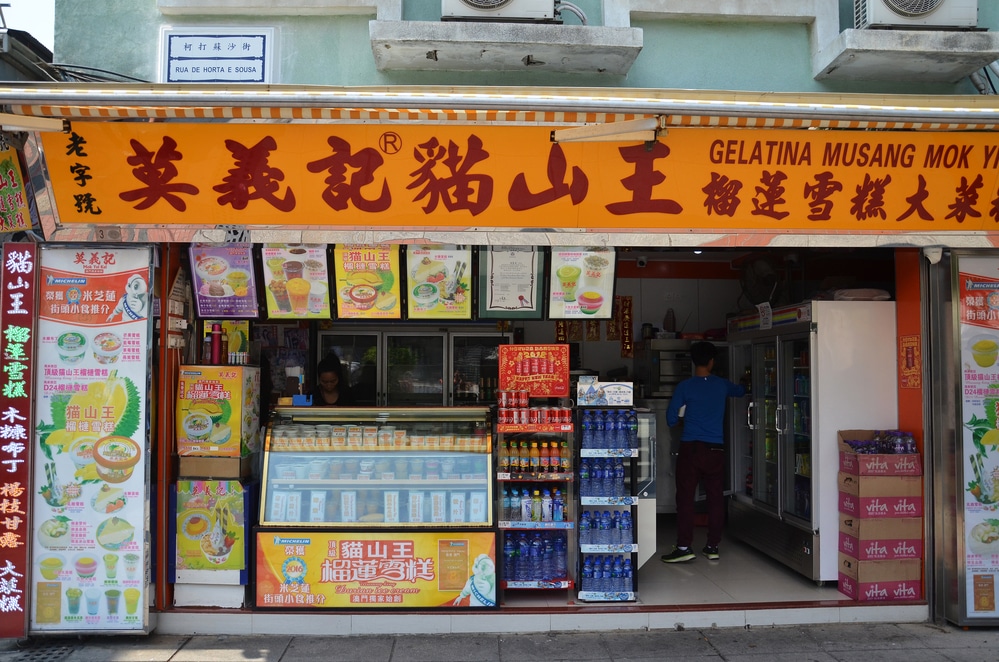
This is another of the really local places that you would probably walk by without noticing was it not for the usual strong smell coming out because of their durian ice cream. I am not a fan of the pungent and just downright smelly fruit, and I cannot stand the ice cream version either, but you should go to this old establishment for a serradura instead.
The sawdust pudding that is typical of Macau is also served here either with the cream in between the Maria biscuits, or with ice cream. The place has no website but you can spot it on Rua da Cunha. Check the map below. It is very close to one of Lord Stow’s locations in Taipa and also near Cheong Kei Noodle House so you can add it to your meal.
Fernando
Fernando is a bit off the tourist thoroughfare and pretty much on its own unless you venture to one of the two beaches in Macau, Hac Sa Beach. Here is some more information on the beaches in Macau.
What makes Fernando special is its beach-side location and free-flowing al fresco dining with an assortment of traditional Portuguese dishes.
Everything here is casual, and you will feel as if you were visiting a friend. Fernando is a walk-in restaurant only and credit cards are not accepted so make sure to bring cash.
Getting back to the city at night by taxi or public transportation is hard so it is best go during the day. Check out their website for more details.
Lord Stow’s Bakery
The first egg tart in Macau was conceived at Lord Stow’s Bakery in Coloane and that continues to be the original outlet.
However, the brand has opened several other stores, including some outside of Macau. Though the English baker Andrew Stow passed away, his cafe across from the original Bakery, continues to serve the famous pastéis de nata that are so famous of Portugal.
Margaret’s Café e Nata
Opened by Stow’s ex-wife, Margaret’s Cafe e Nata offers more sophisticated options as well as the regular egg tarts.
The custard filling here is said to be creamier, runnier and sweeter and its location behind the Grand Lisboa casino is a convenient stop in the crazy neon-filled area. Take one of the outdoor tables if available but expect queues and chaos.
I found the egg tarts here a little bit too runny for my taste but they are indeed very similar to Lord Stow’s. The place is hard to find even following Google Maps but your nose can help guide you.
Koi Kei Bakery
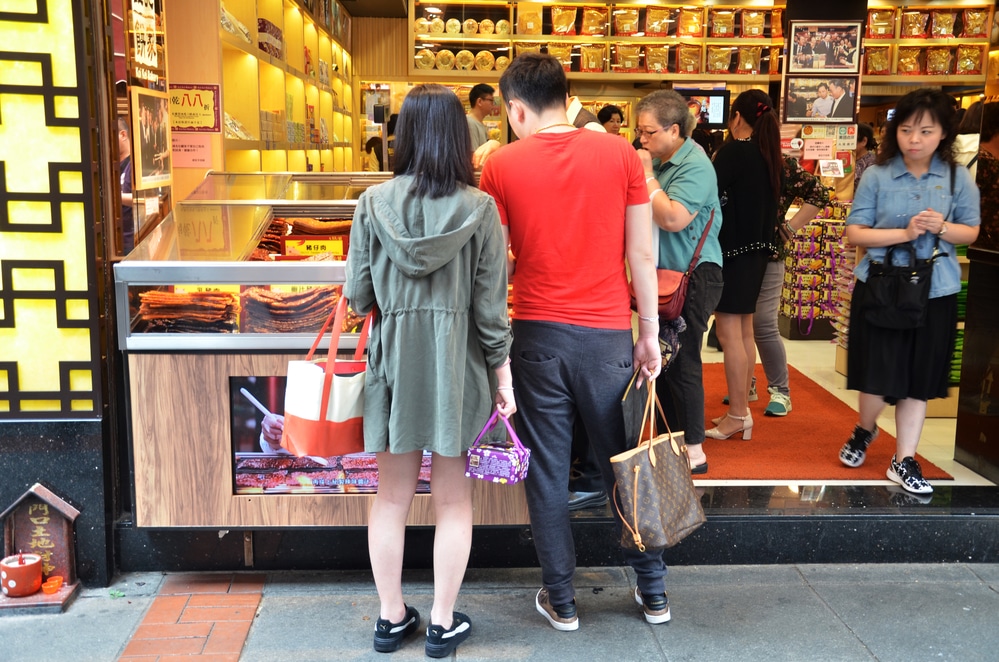
The third contender to the egg tart battle is Koi Kei Bakery, a humble nut and candy stall turned largest confectionery chain in Macau. The brand has become synonymous with almond cookies and expanded into Hong Kong and even Singapore. What started as a humble pushcart owned by an immigrant from mainland China is now an empire of sweets which has appeared in several Chinese soap operas, TV programs and drama series. The founder, Leoung Chan-Kuong, has sponsored several TV programs and commercials which have made the brand even more famous in the Chinese-speaking world.
At Koi Kei Bakery, variety is the name of the game with over 300 types of products on sale, including several seasonal products like Chinese New Year or Autumn mooncakes, but you can also stick to the original cookies or egg tarts if you want something more “normal”.
For an exotic but very Chinese alternative, try the pork floss cookies. I particularly loved the sesame flavored ones. If you are visiting near a marked holiday, look out for prettily packed boxes like those sold for Christmas or Chinese New Year which make for an extra-special souvenir.
Best to come here after a dessert-less meal and sample their products until you find what you like most. Koi Kei Bakery also sells the famous Bak Kwa so you can get all your food fixes here. Just remember, unpackaged food cannot be taken into lots of countries like Australia or the US so make sure to check before your goodies get confiscated at immigration.
Restaurante Litoral
Regarded as one of the most traditional Macanese restaurants in Macau, Litoral is a must try if you want to sample the African chicken dish which is otherwise pretty hard to find. Started by the wife of one of the Portuguese descendants, she one day decided that it was time for the food that was mostly enjoyed just at home to hit the limelight and opened the elegant restaurant down by the port.
You should make a booking before showing up as the place is always full. Their website is here but does not give much information so get your hotel to help out.
How to plan a food-filled trip to Macau
You don’t really need much to organise our trip to Macau. The city is well connected, taxis are relatively easy to find with the taxi hailing apps, the public bus system is great and cheap and there are plenty of free shuttles going to the many destinations from the main hotels.
The map below has all the locations for the restaurants mentioned above. The only thing you need to consider when deciding what to eat in Macau every day is the proximity because distances can be long and every time you cross from Cotai/Coloane/Taipa into Old Macau or vice versa you will be spending half an hour. If you keep going back and forth you will waste a lot of time so try to plan the order accordingly. Use the map below with all the places to eat in Macau.I would also suggest that you book ahead in the case of many of the restaurants, especially fine dining places, Litoral and even Antonio’s.
Getting to Macau
Macau is linked to major hubs via its international airport. However, if there are no direct flights from your home city, you may be able to get there via Hong Kong and then take the ferry across. The entire process is pretty seamless as there are dozens of ferries crossing the sea all through the day and night and the ferry terminal is reachable on foot through the transfer corridors of Hong Kong International Airport so you don’t even need to leave the airport.
You are best to buy the ferry tickets ahead of time online or can also pick them up at the terminal. The ride is just 1h but the seas can be really rough. Make sure to choose the right destination terminal as there are stops at both Old Macau, Cotai and even mainland China. There are several ferries running every hour from two companies covering the route, TurboJet and CotaiWaterJet. Both companies stop at Hong Kong’s international airport as well as the city’s downtown area. In Macau, they stop at either Taipa Ferry Terminal or at Macau Outer Harbour Ferry Terminal on the peninsula. Check my guide to 1 day in Macau from Hong Kong for all the details.
The easiest way to get to Macau is by flying directly. There are flights from Singapore, Tokyo, various Chinese cities, Bangkok, Kuala Lumpur, Manila, Seoul and Taipei among others. Check flights on Wego for specific availability and prices.
Don’t forget to Pin this to your food and travel boards!
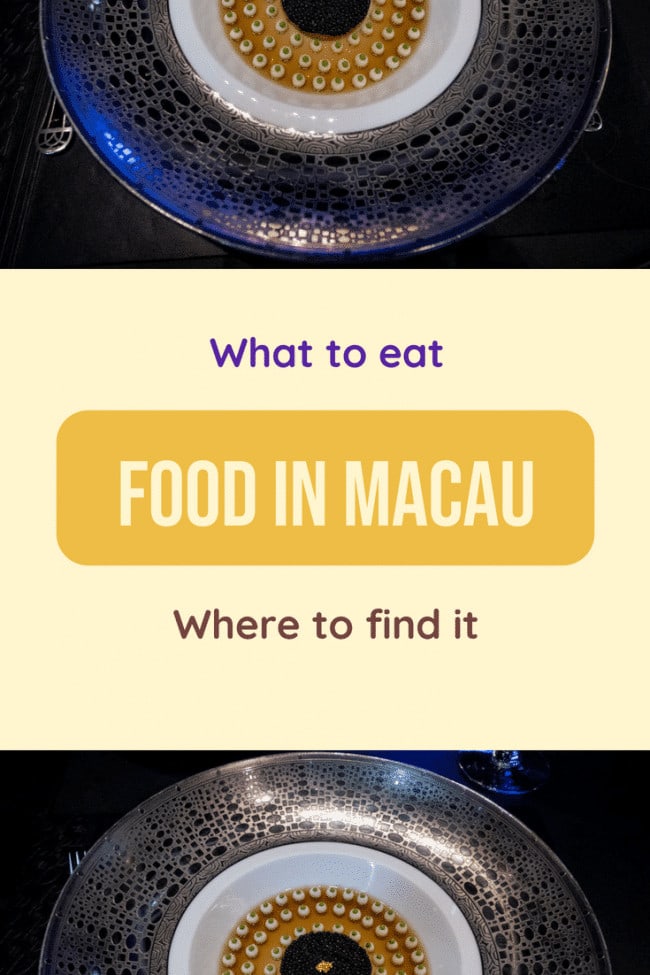
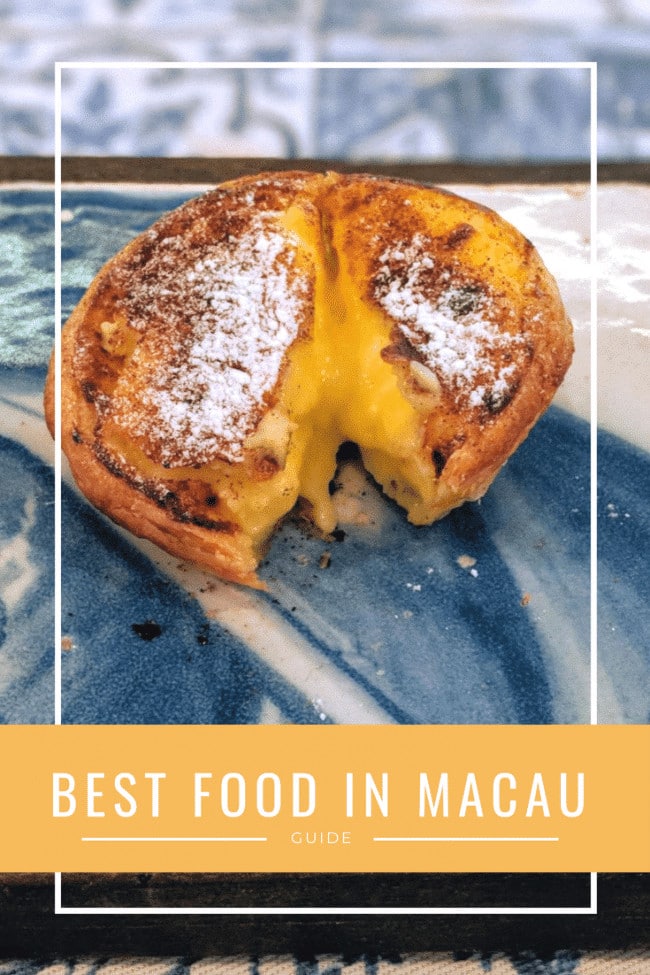
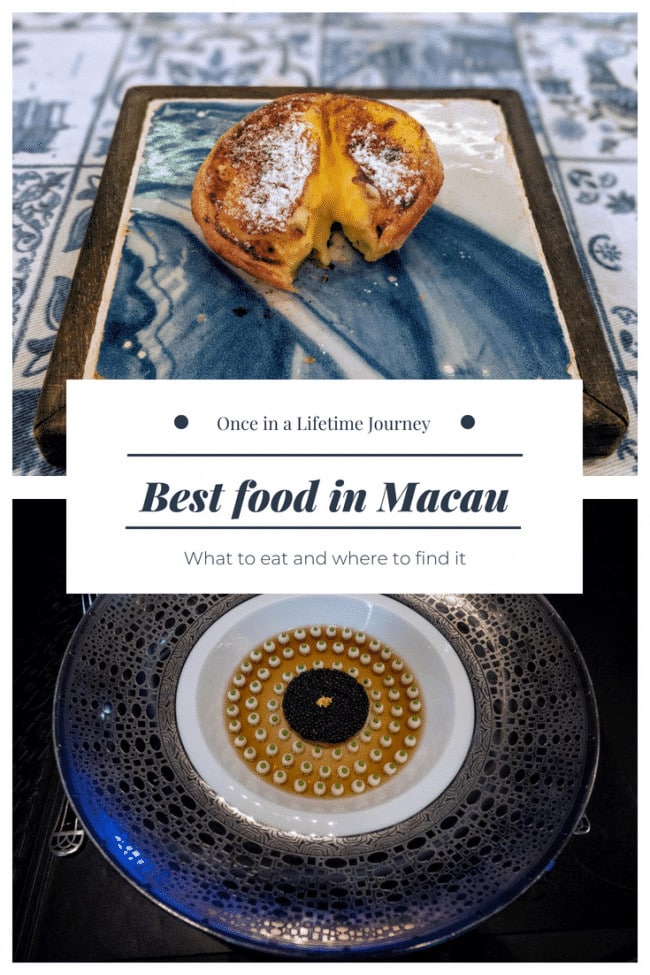
- Check if you need a visa, get help processing it at iVisa.
- Never ever leave without travel insurance. Get affordable coverage from World Nomads or long term insurance from Safety Wing.
- I find all of my flights on KAYAK. Check their Deals section too.
- Search for all your transportation between destinations on the trusted travel booking platform Bookaway.
- I book all my day trips and tours via GetYourGuide, they are the best and their tours are refundable up to 24h in advance.
- Get USD35 off your first booking with Airbnb.
- Compare hotels EVERYWHERE at HotelsCombined and book with Booking.com.
- Compare car rental prices at Rentalcars.com

